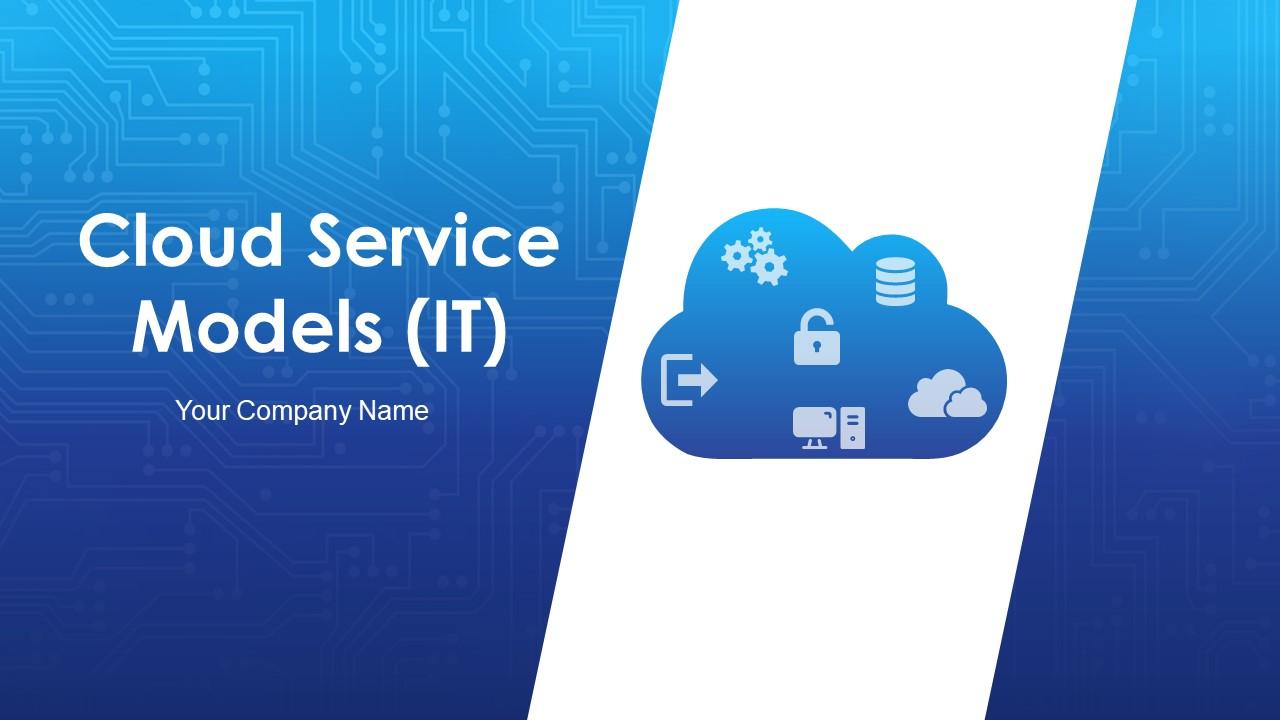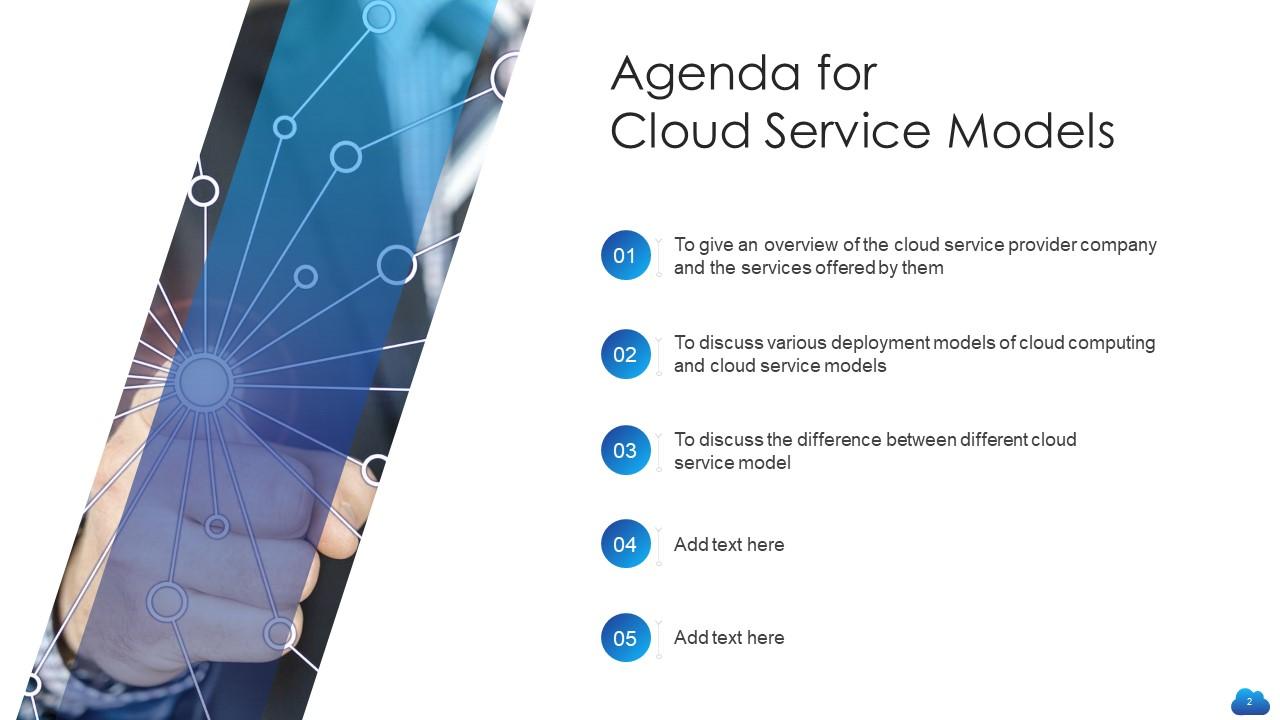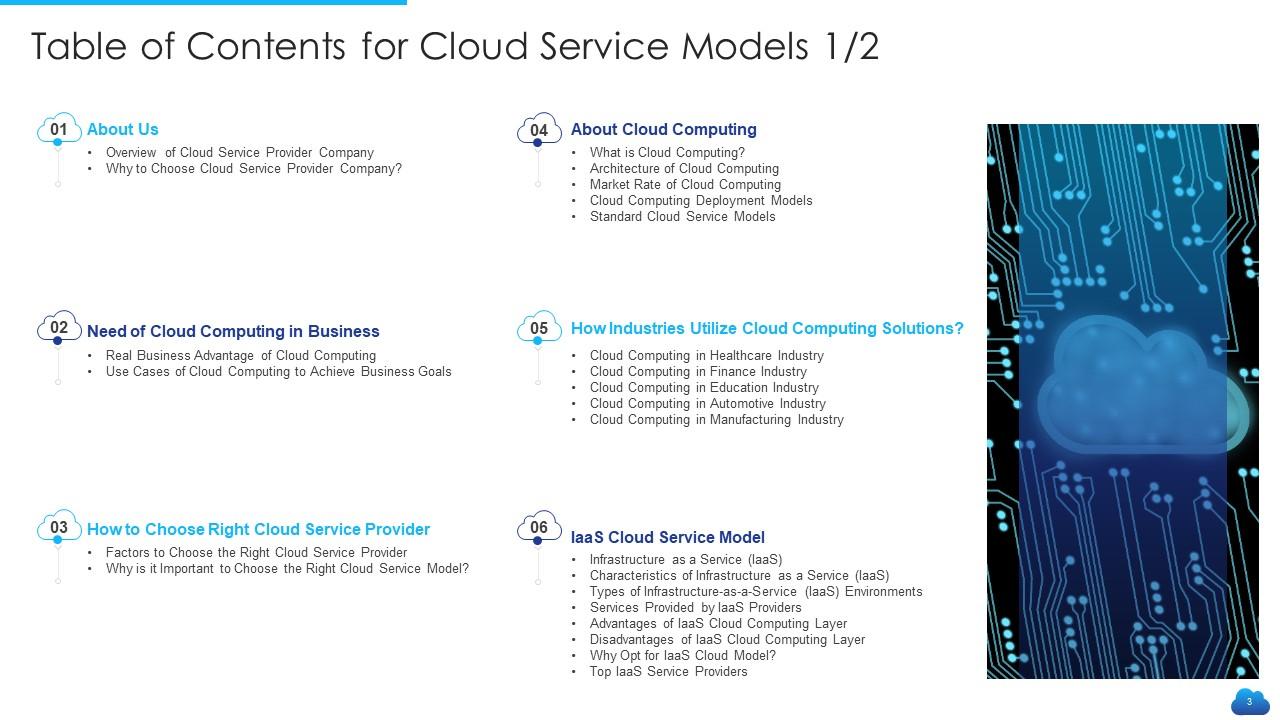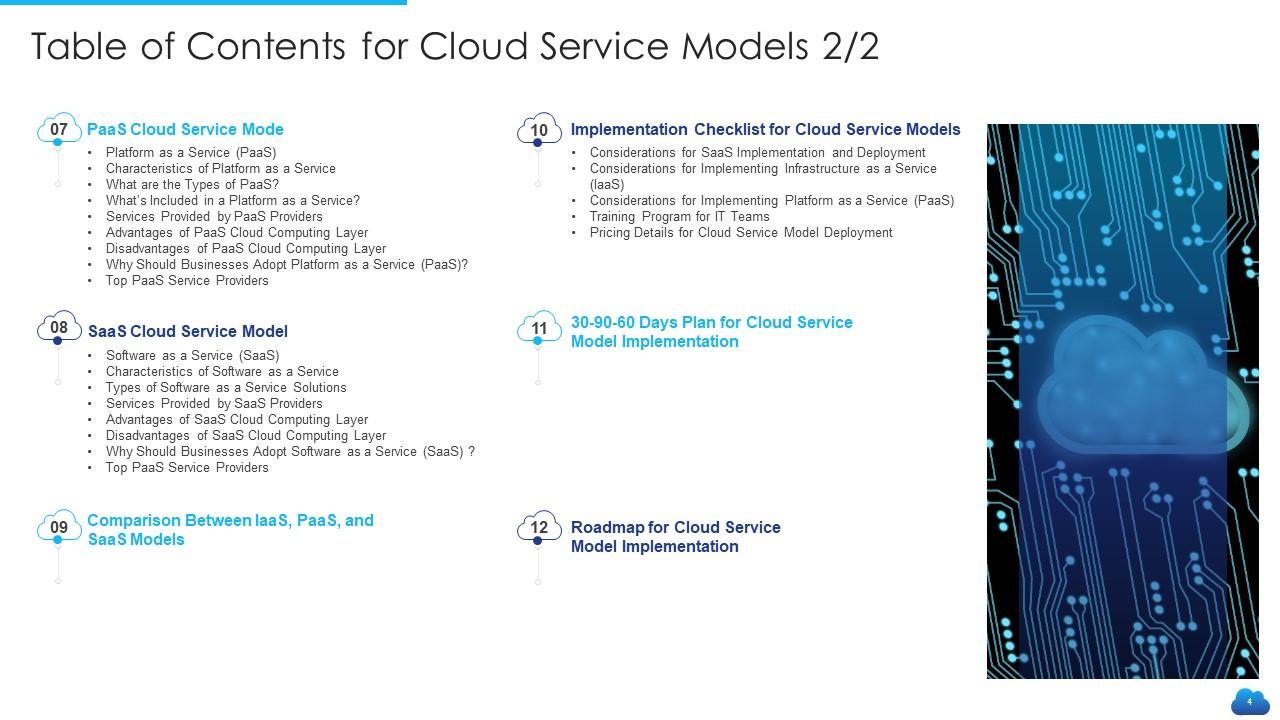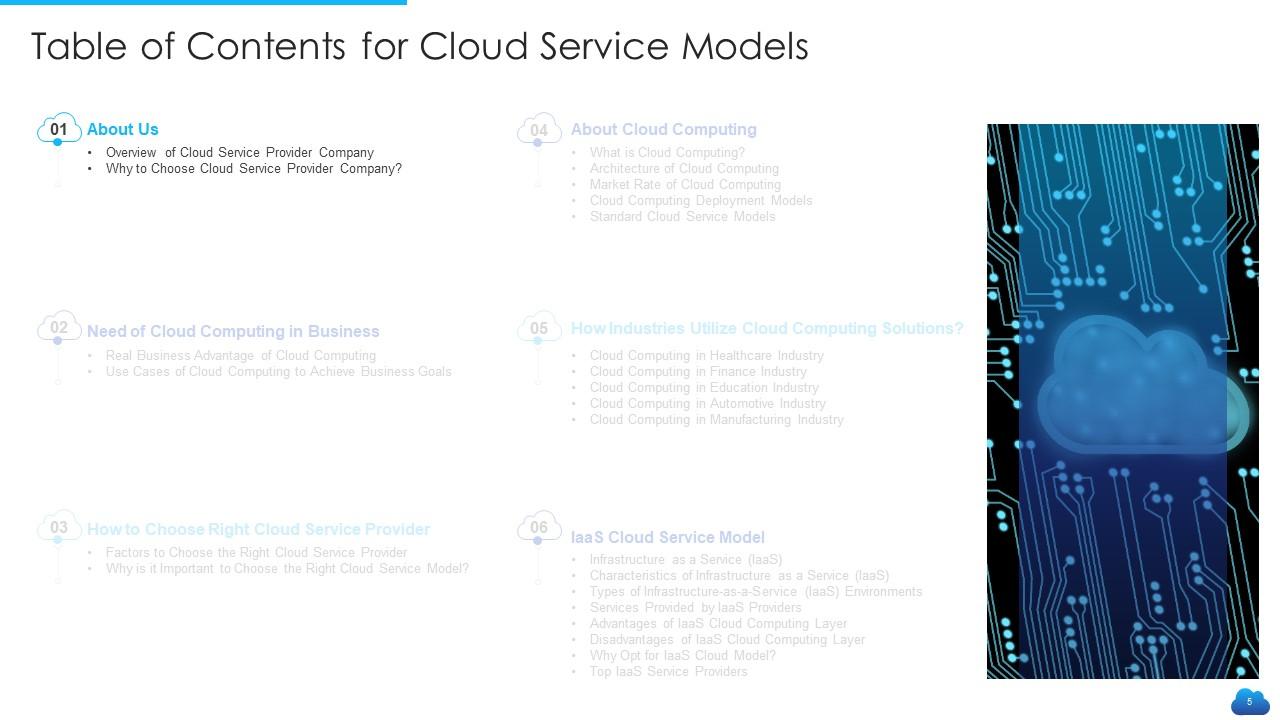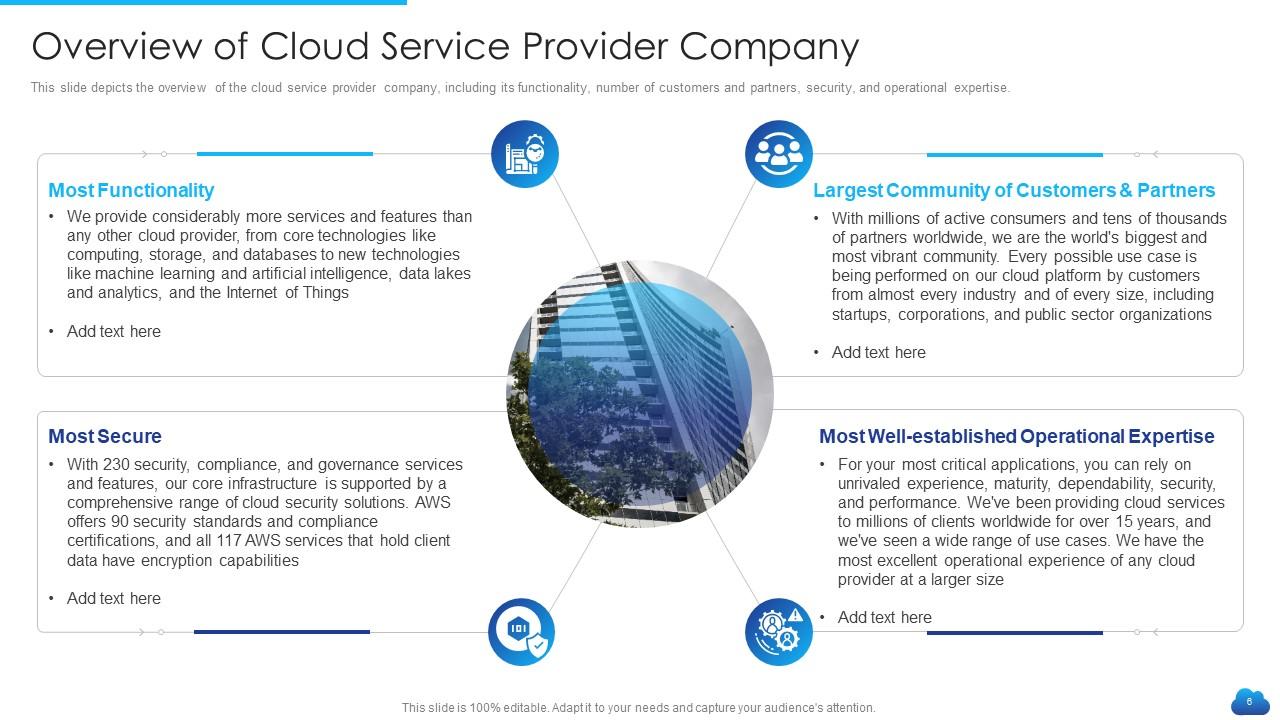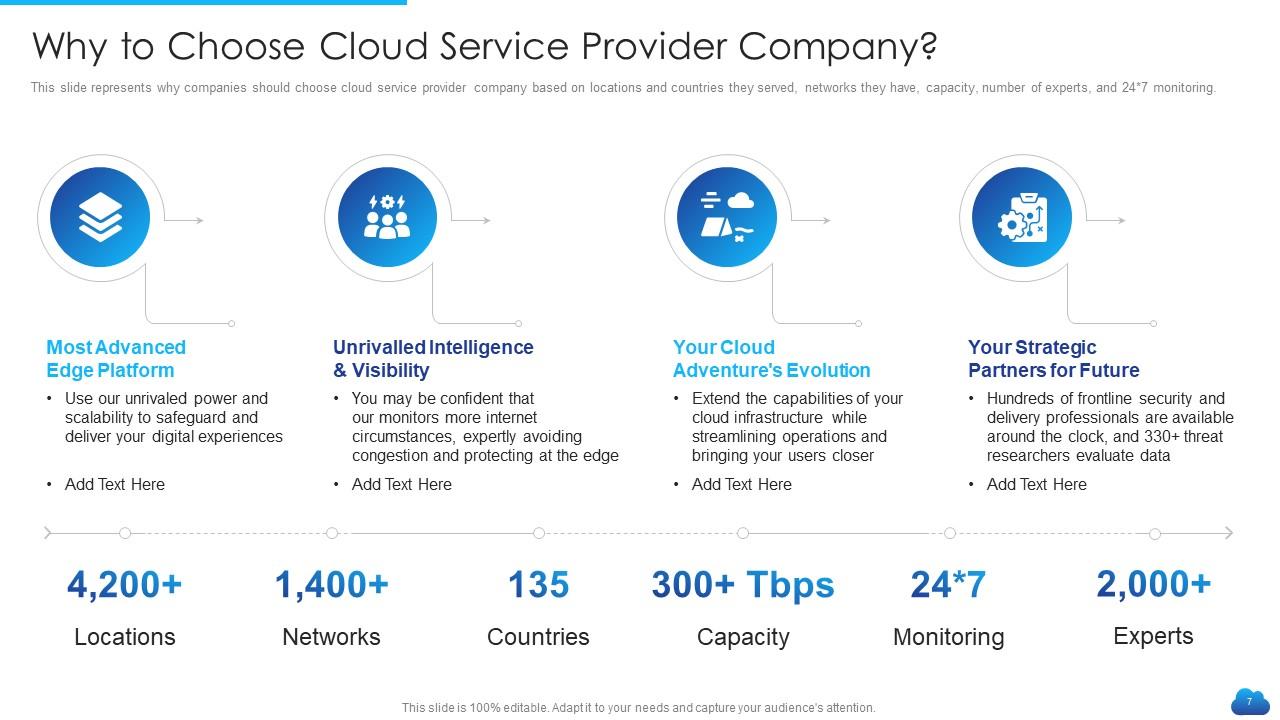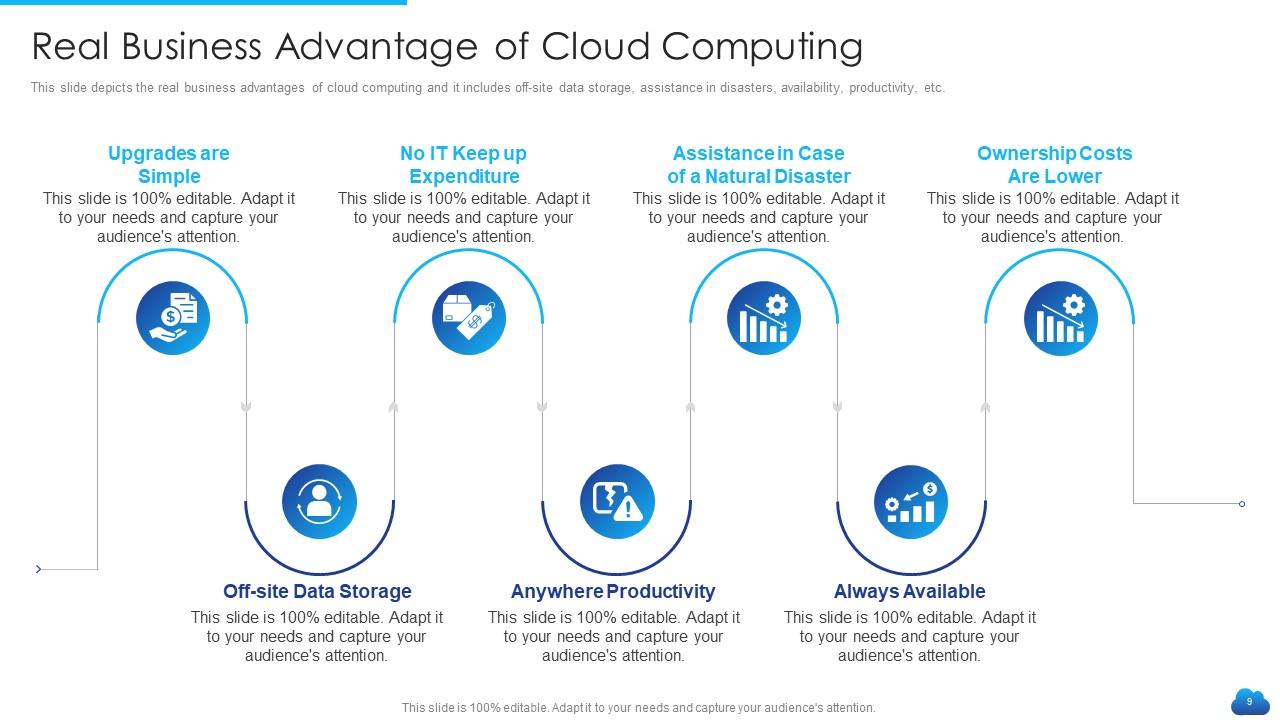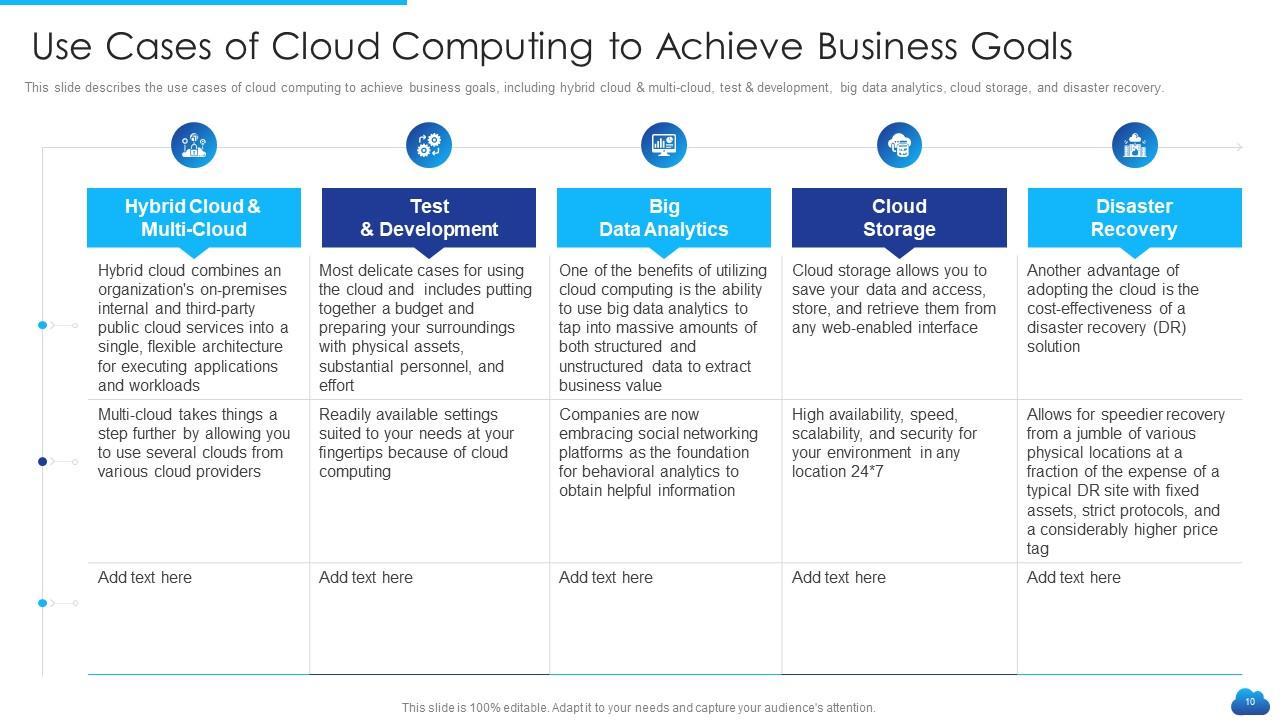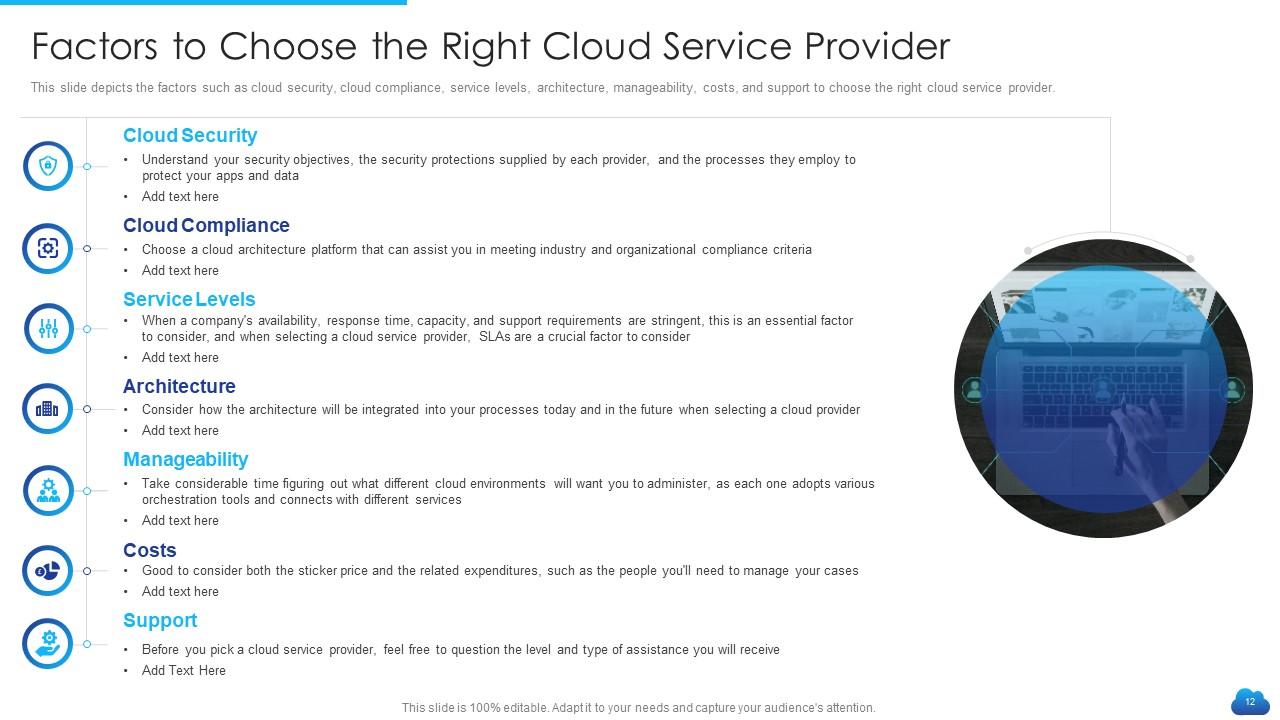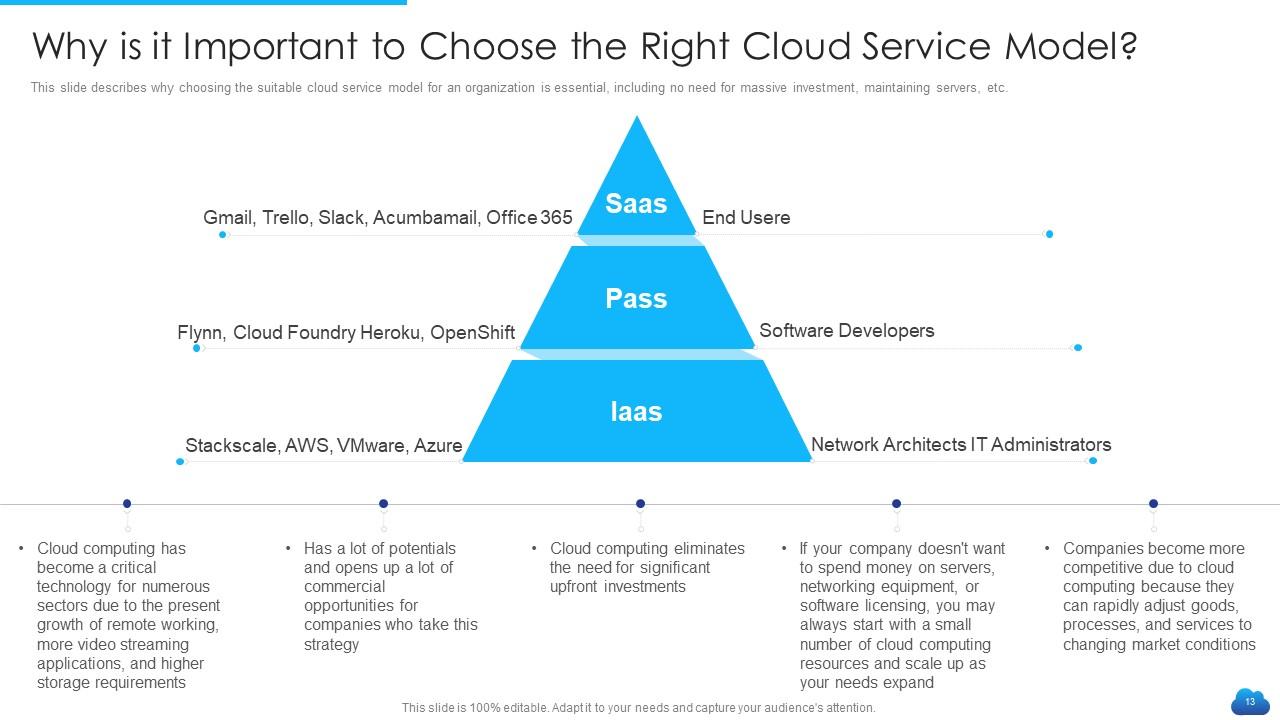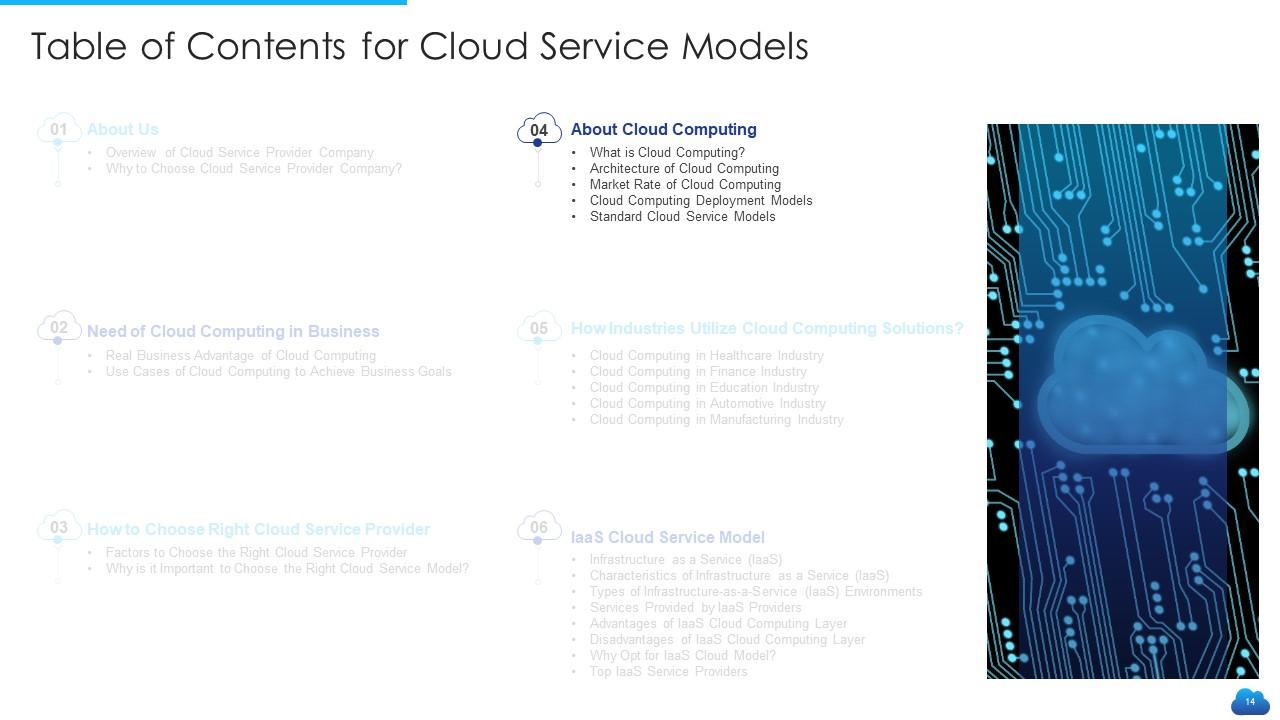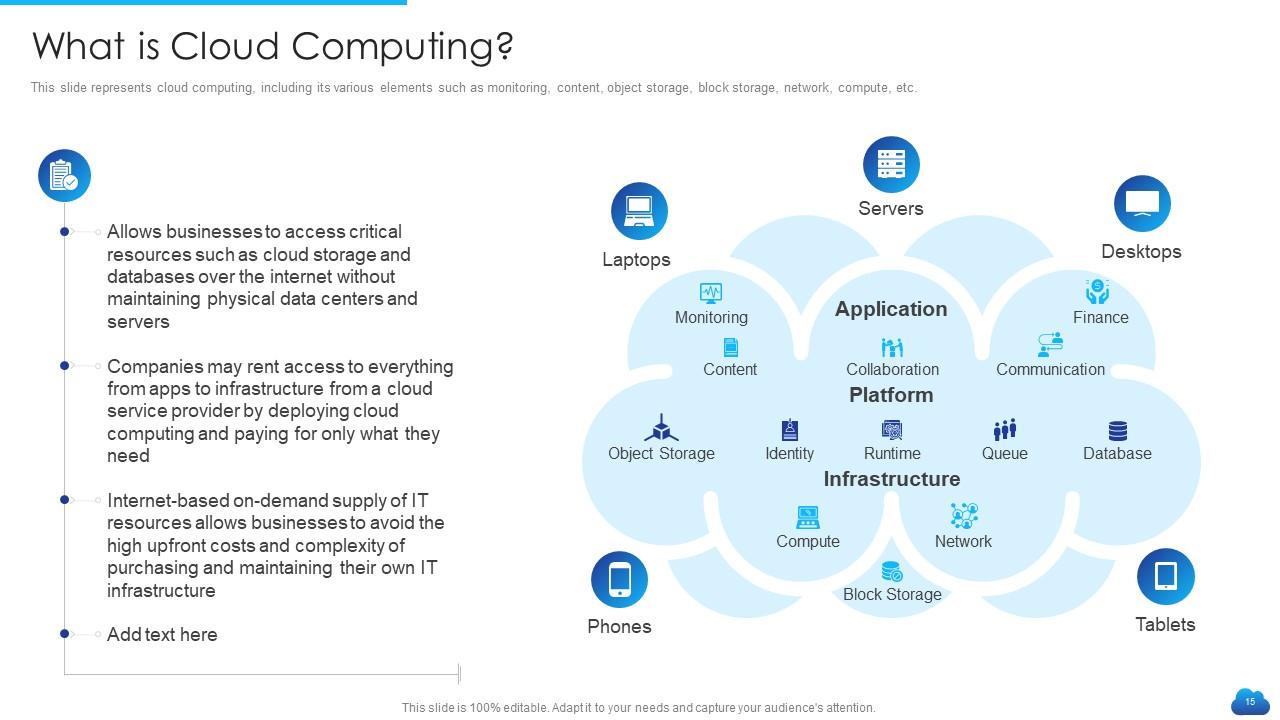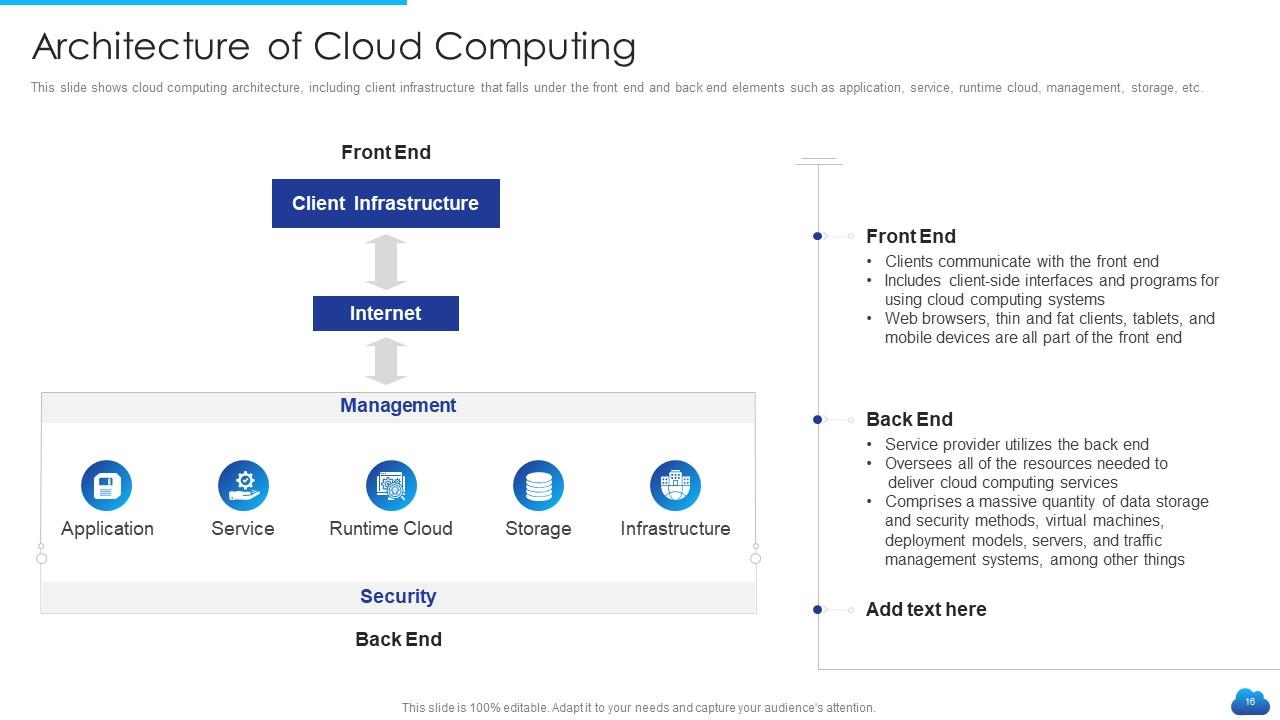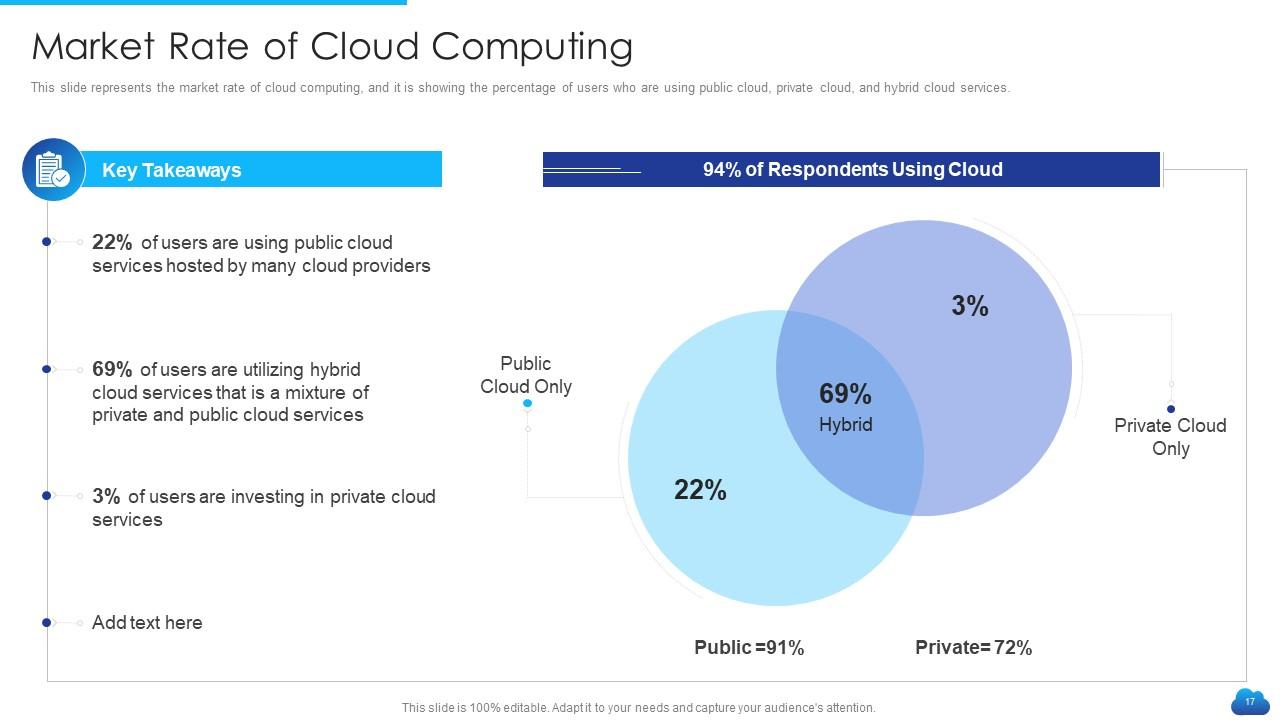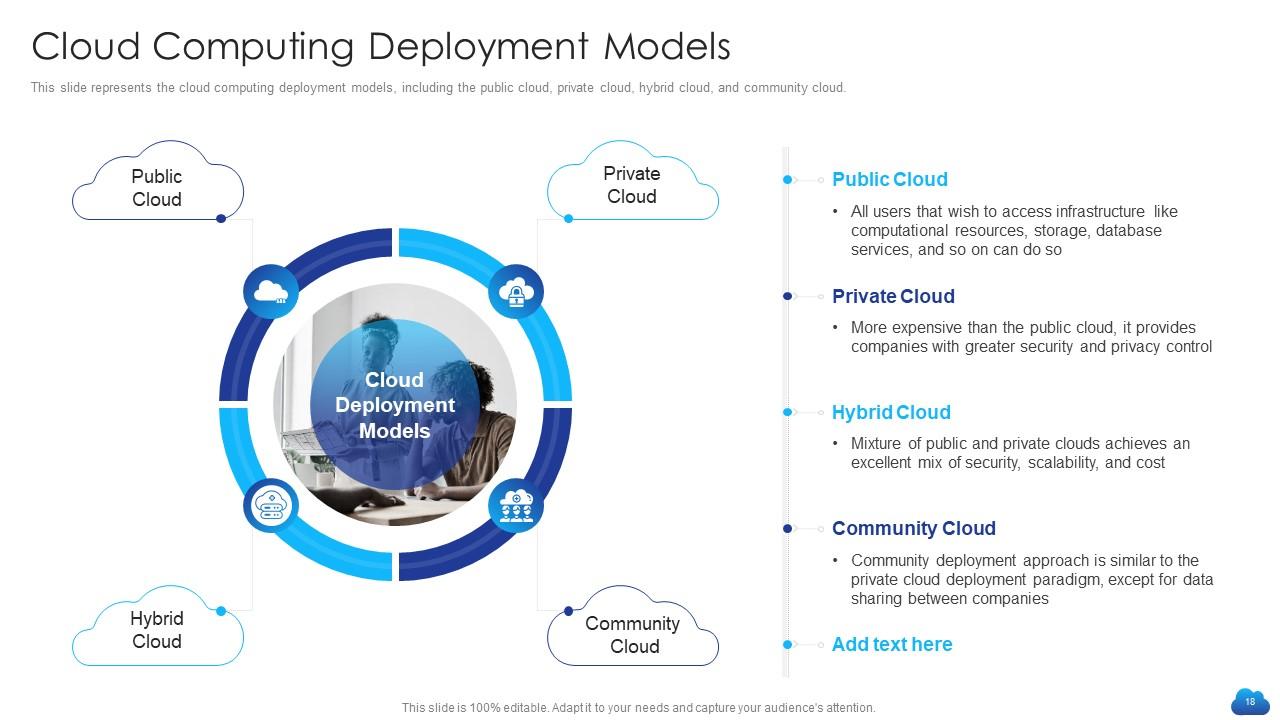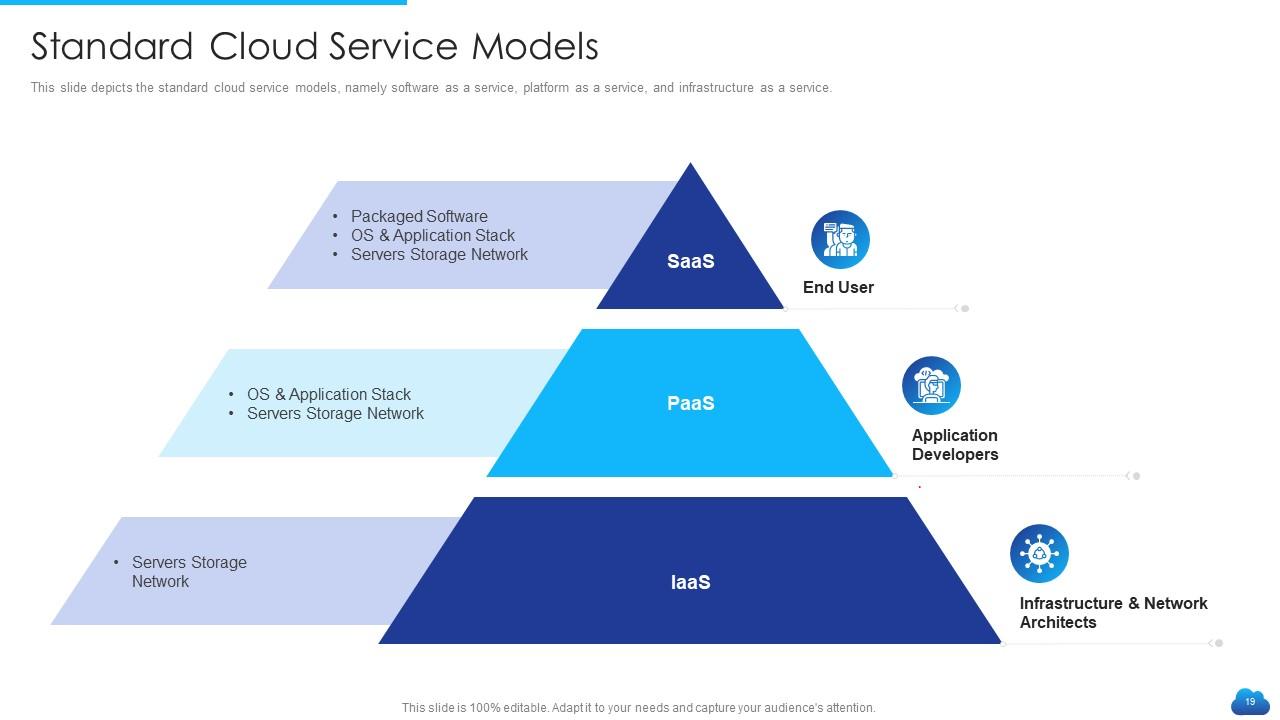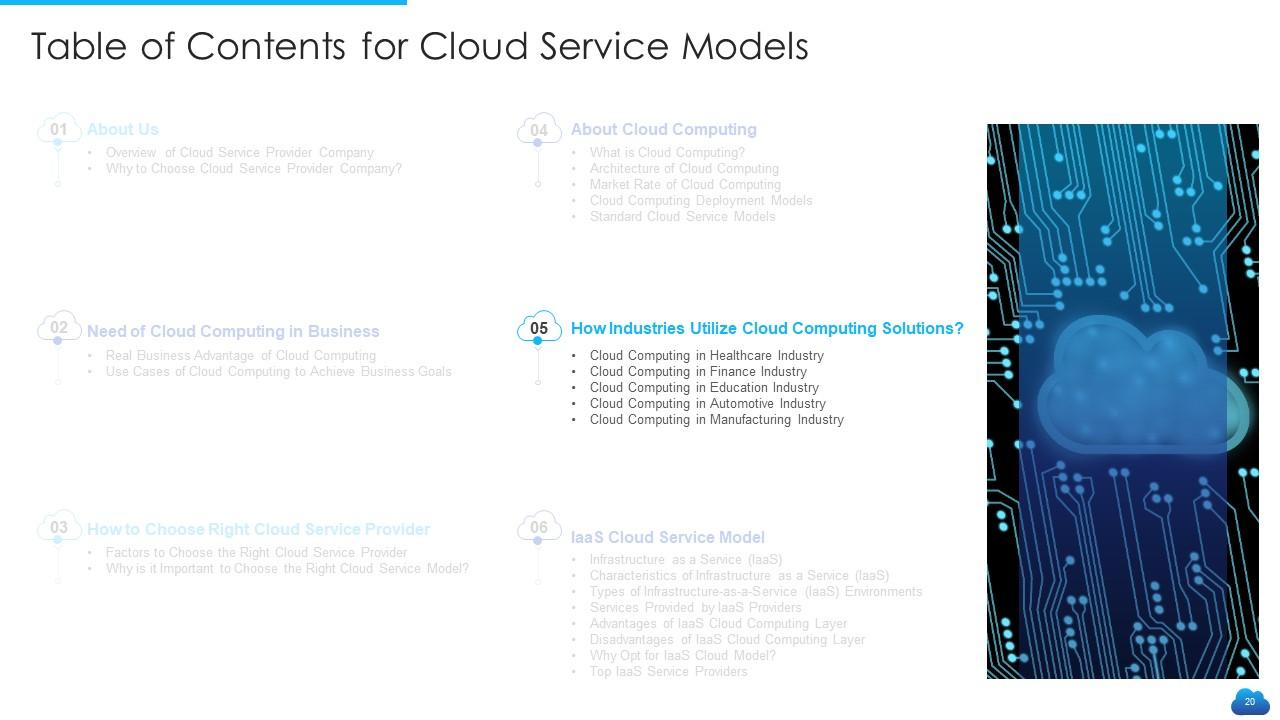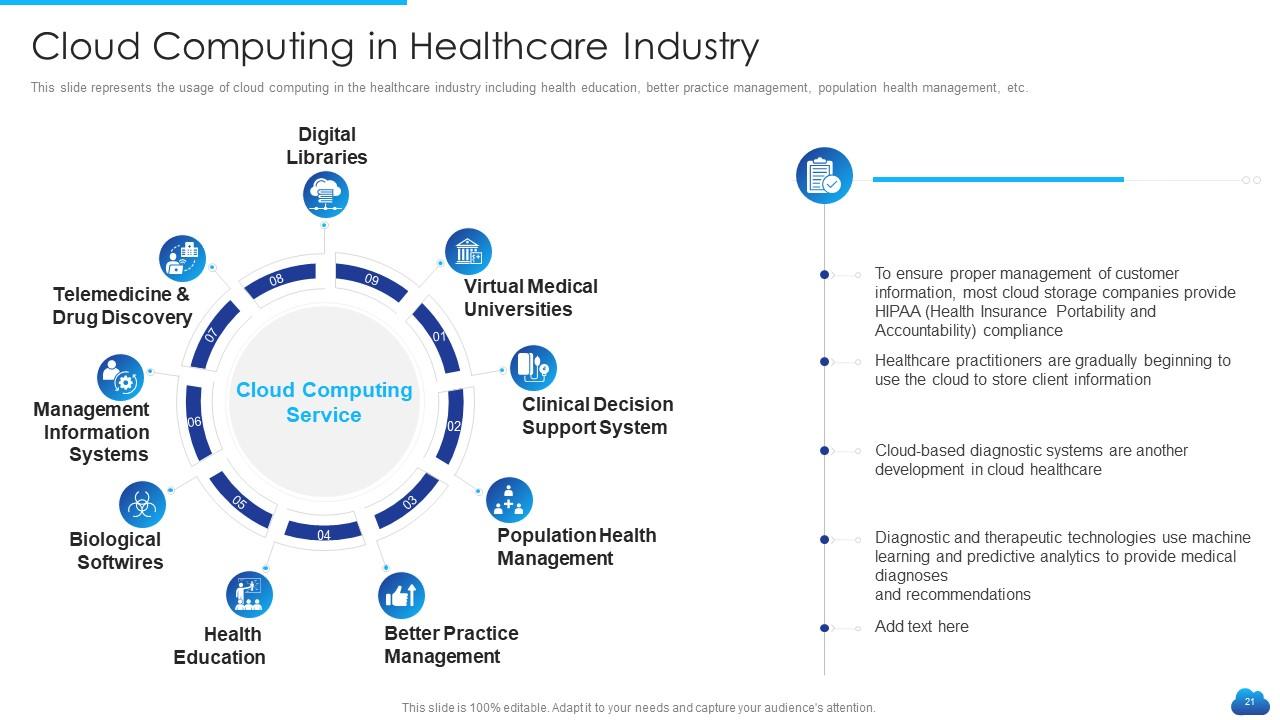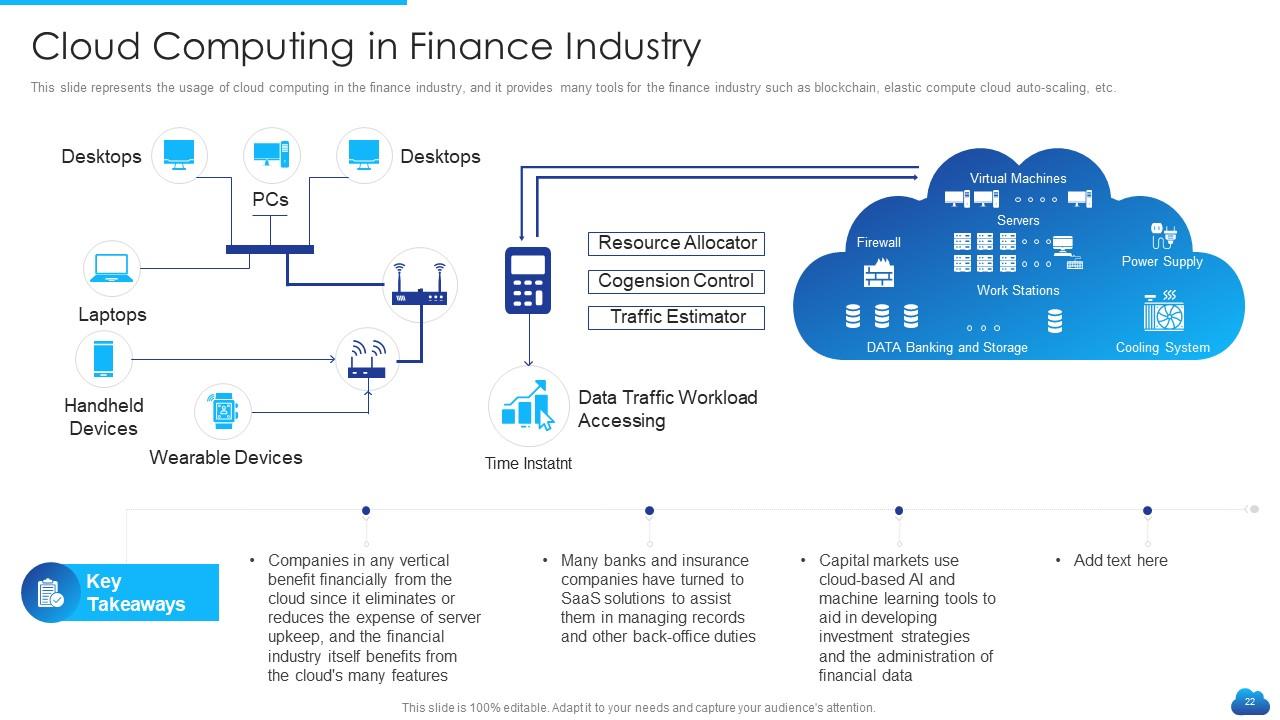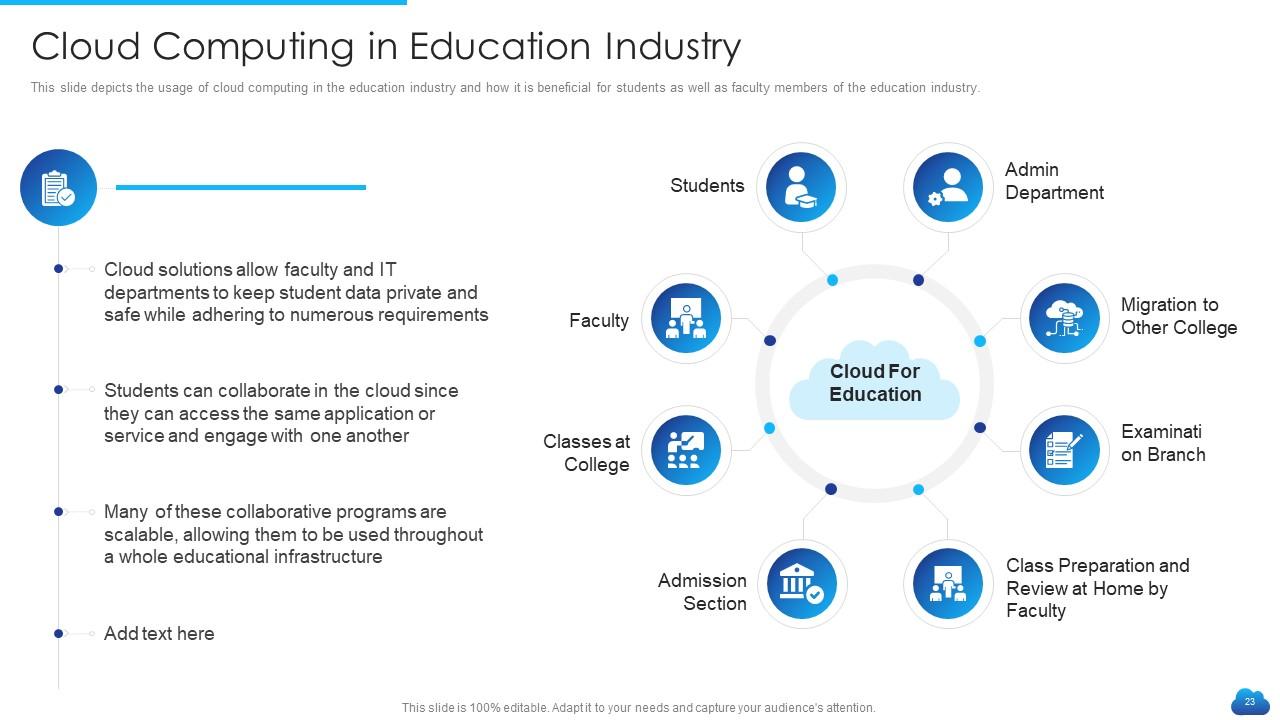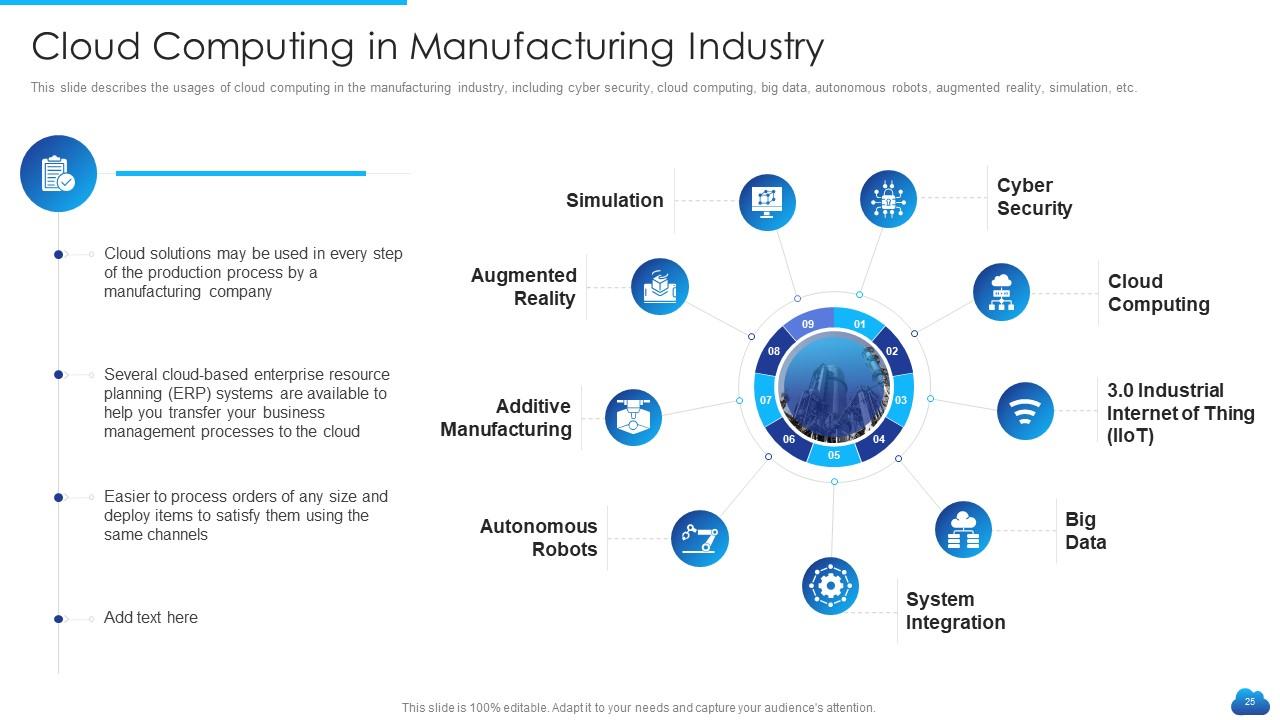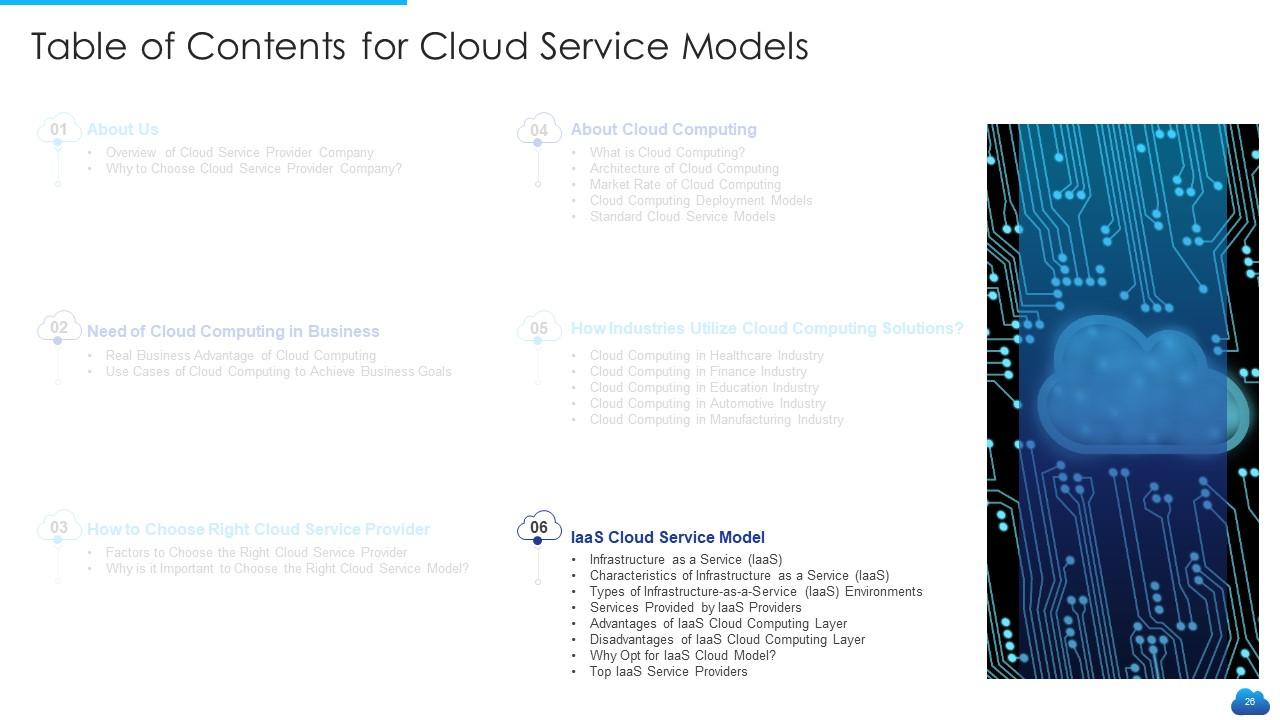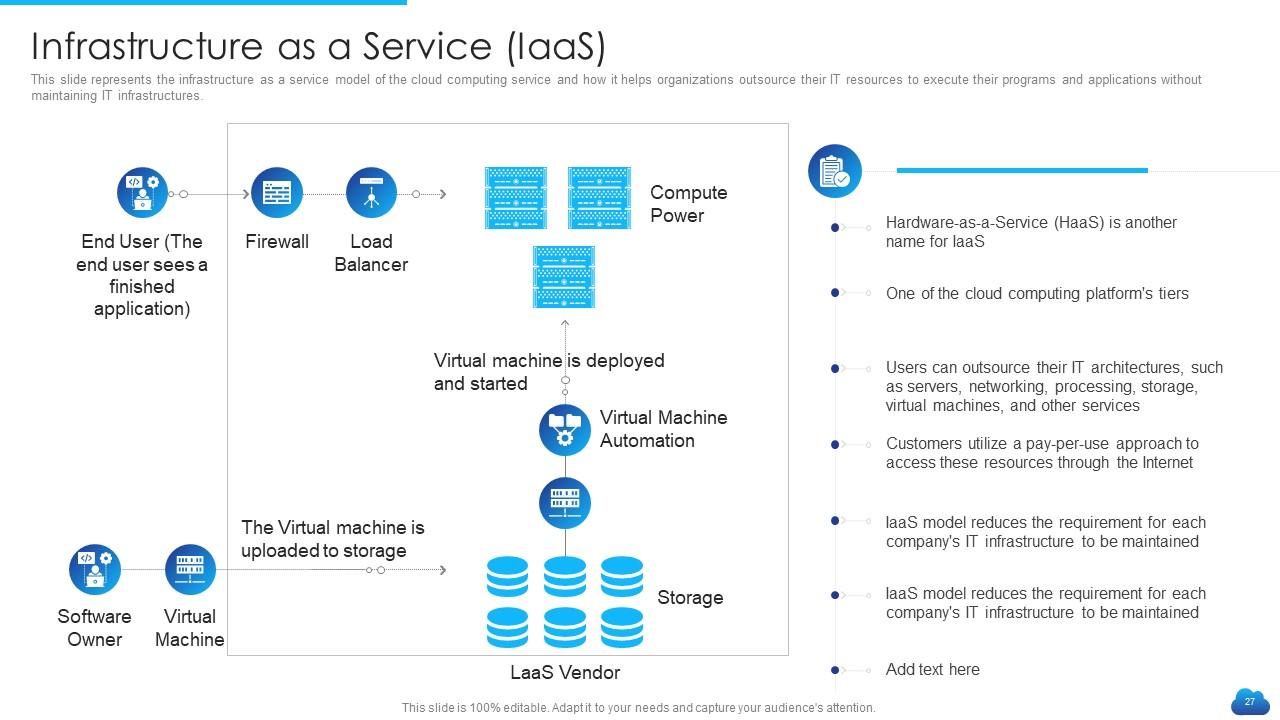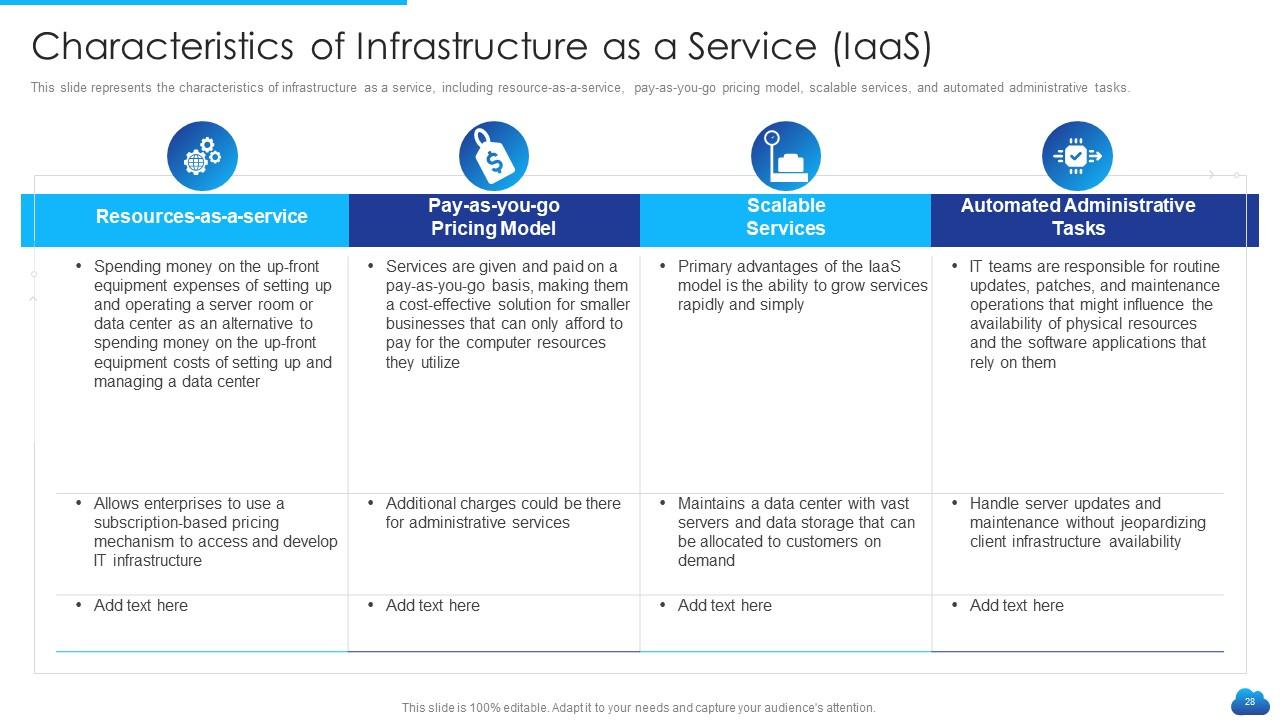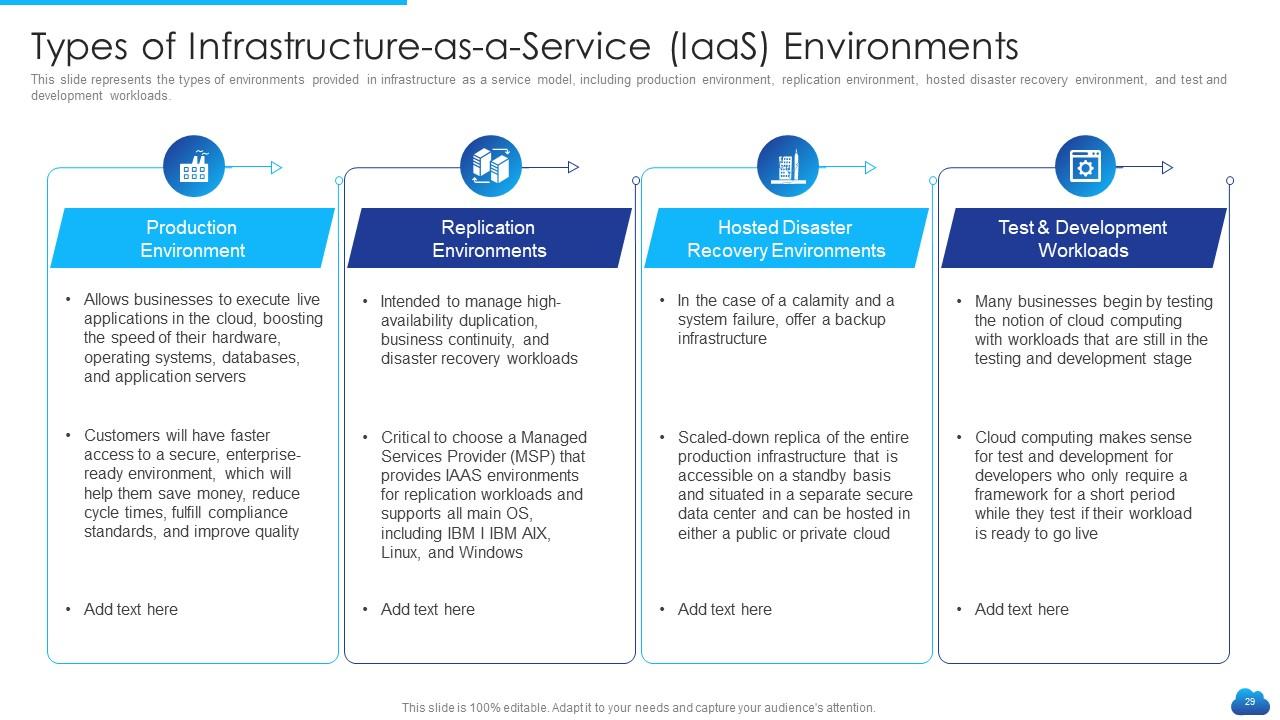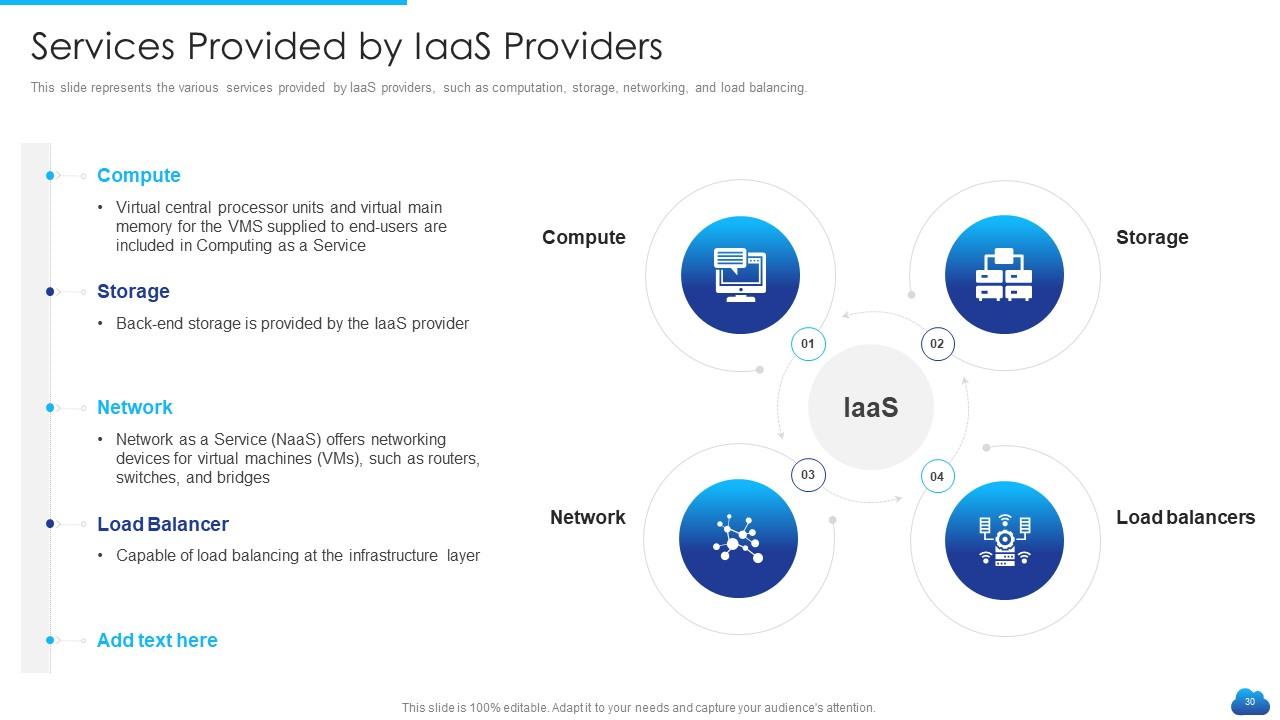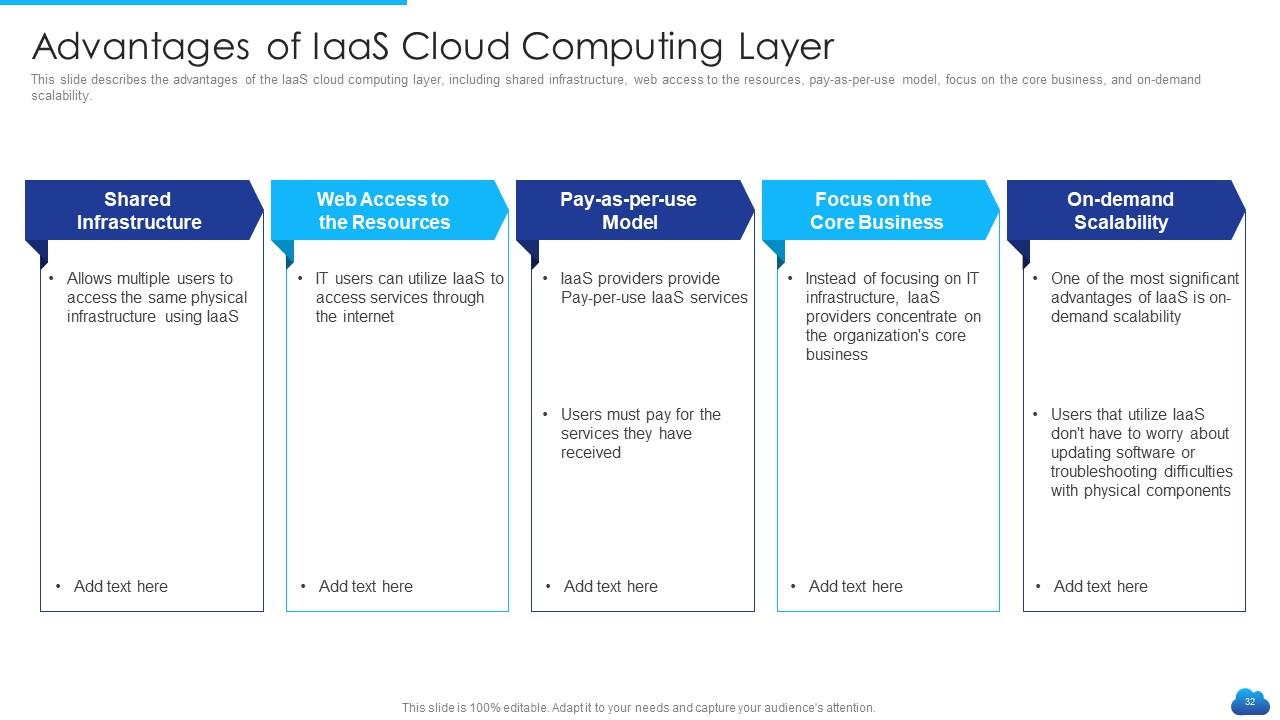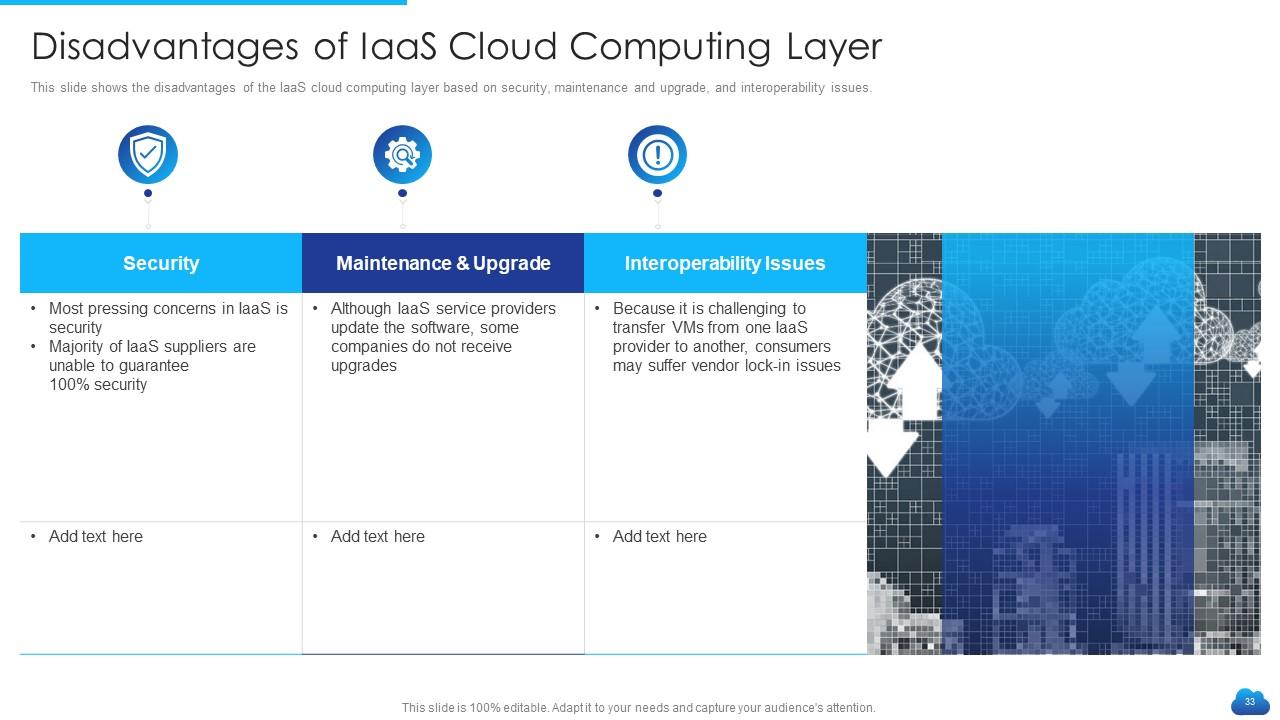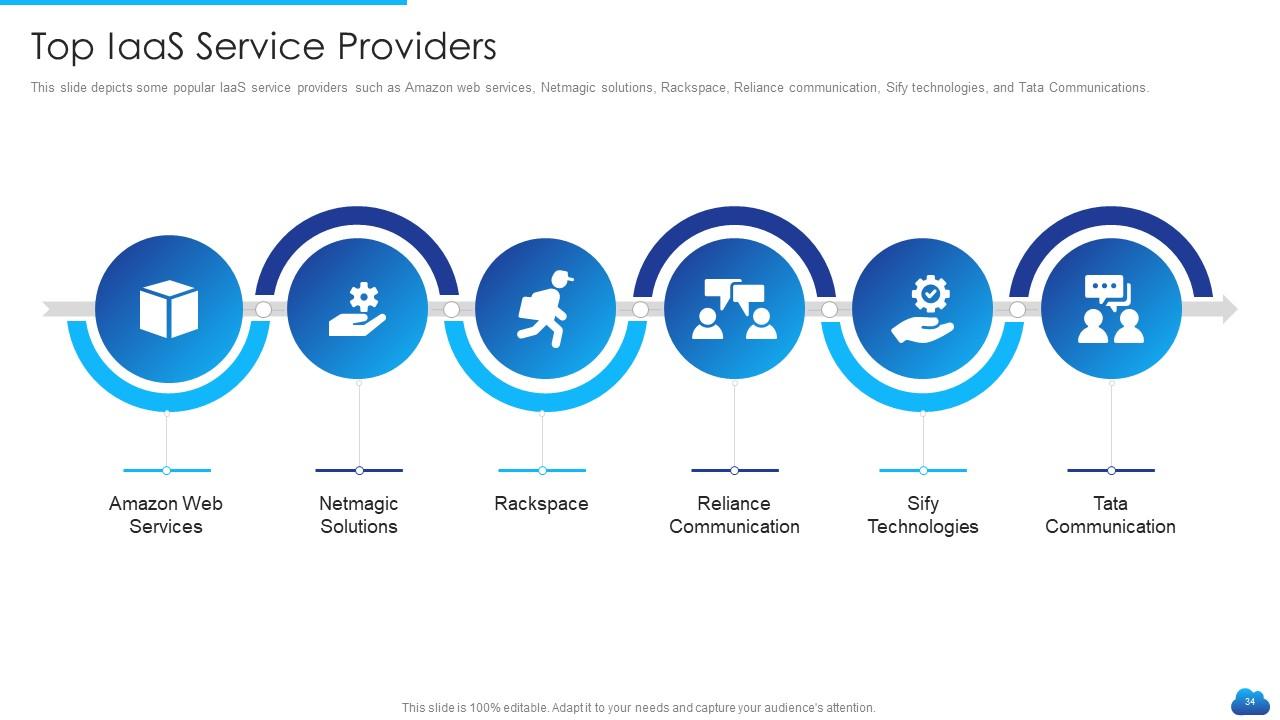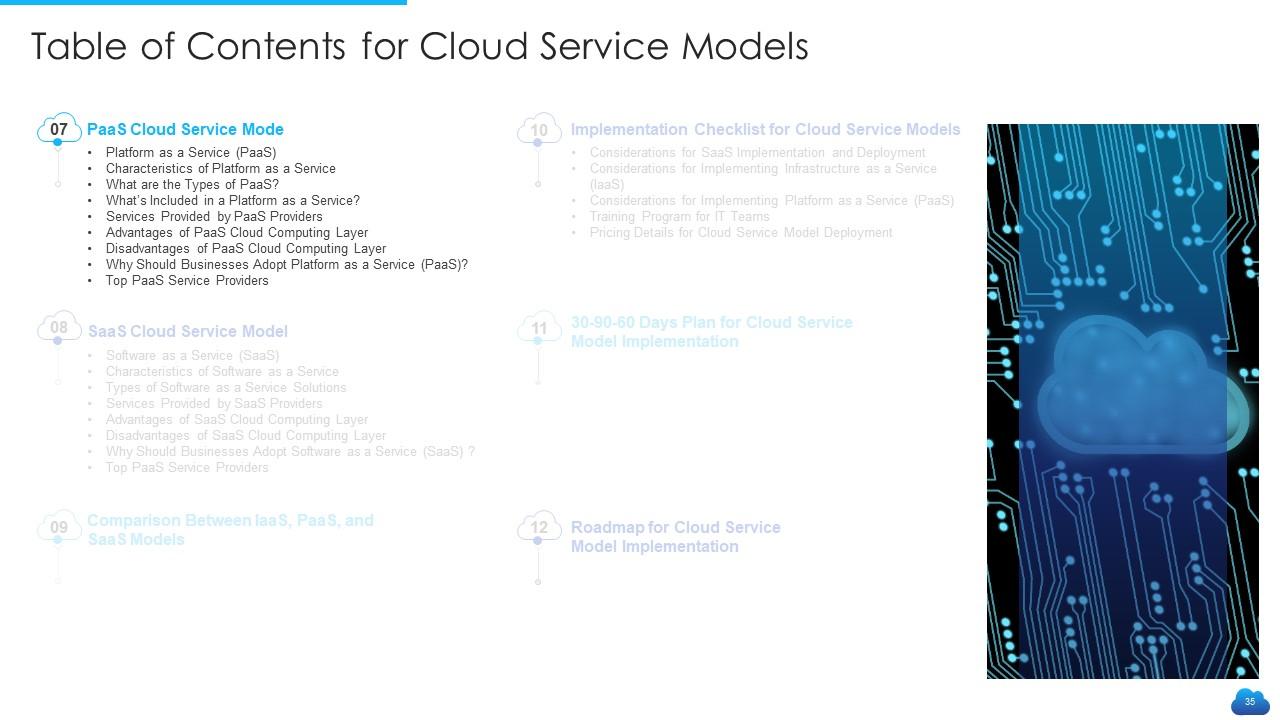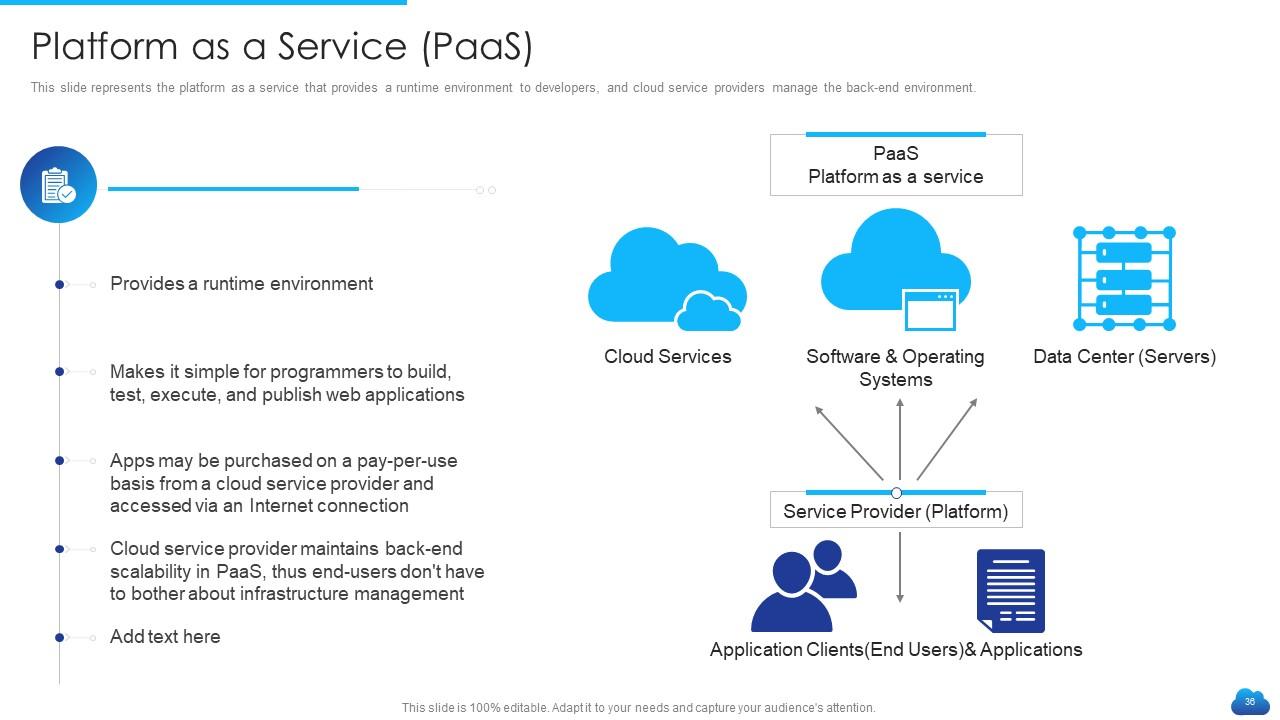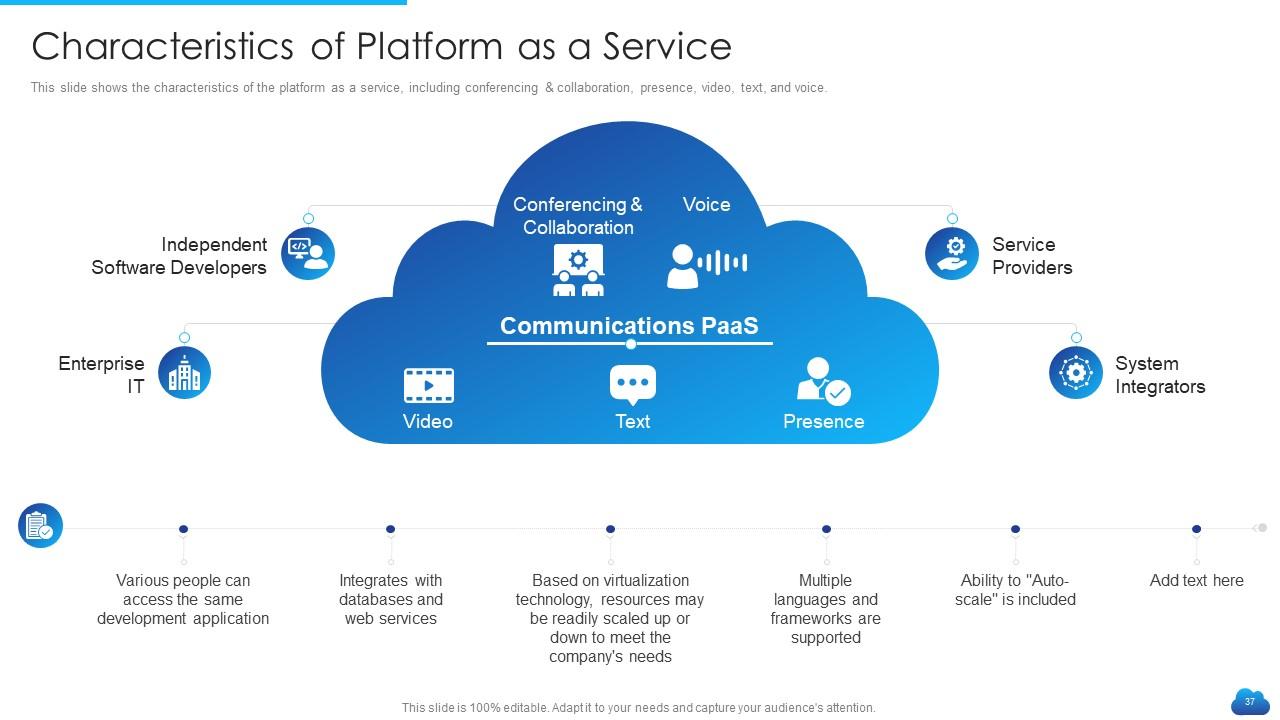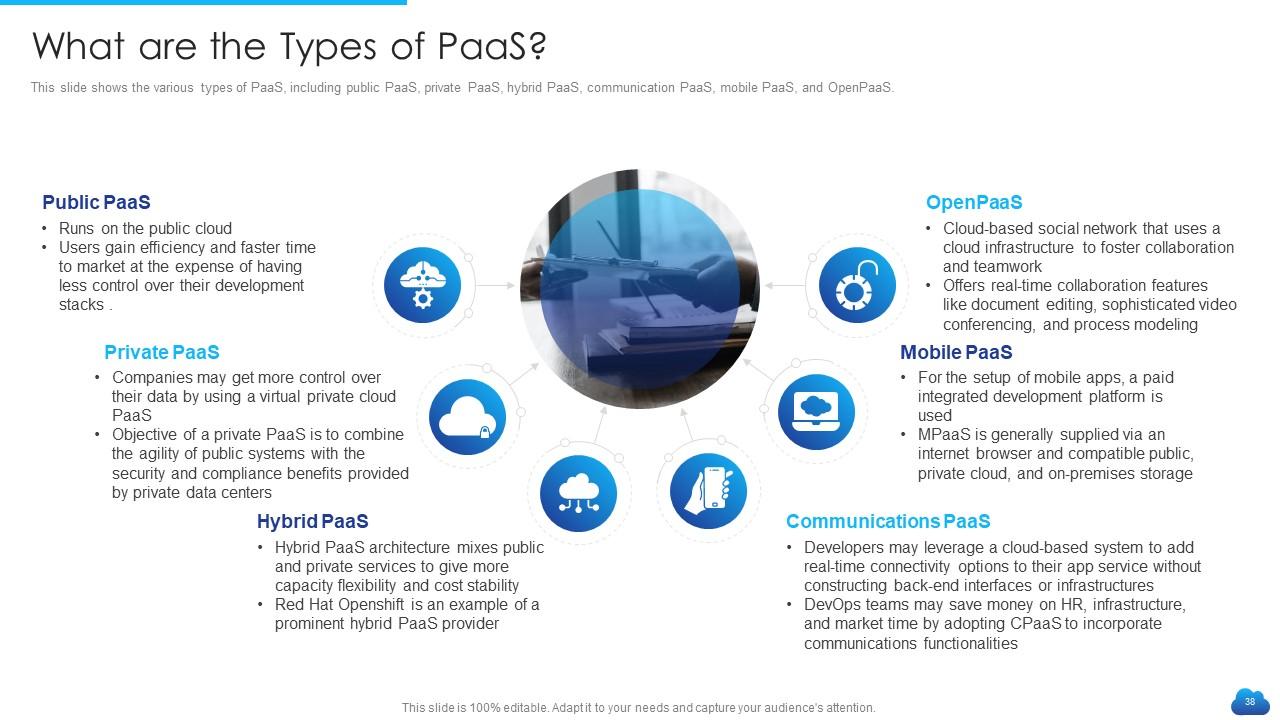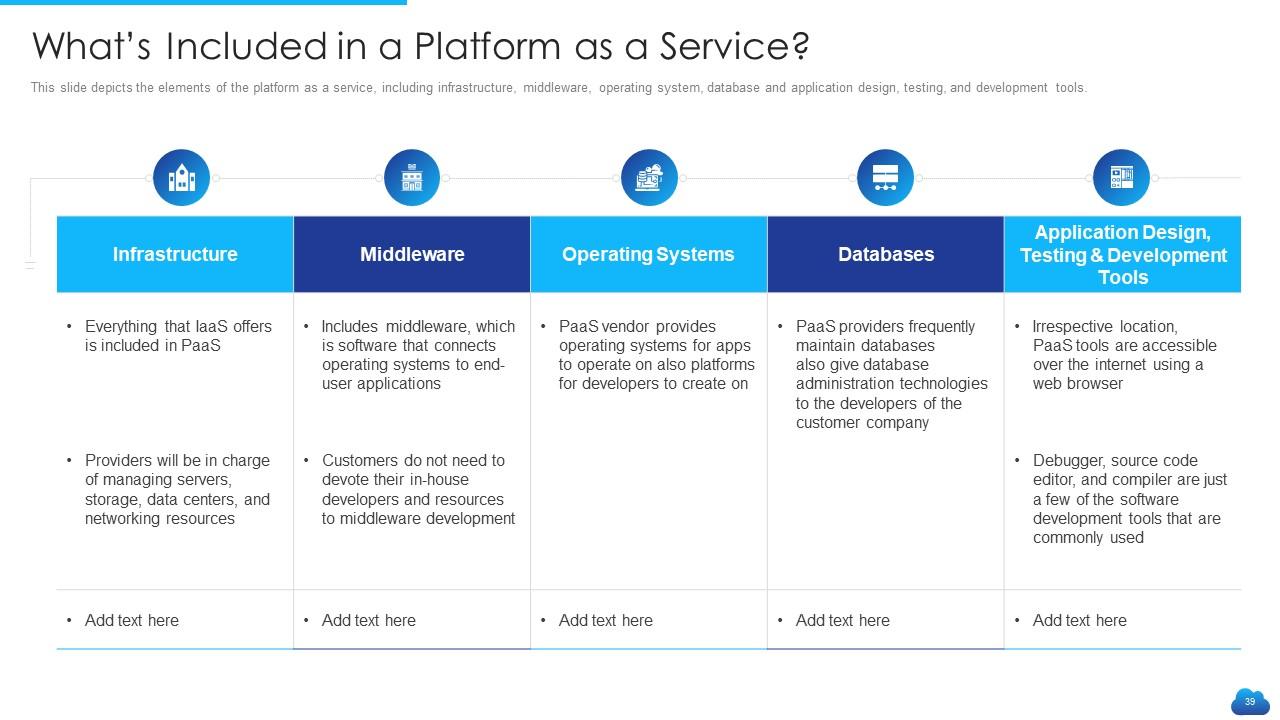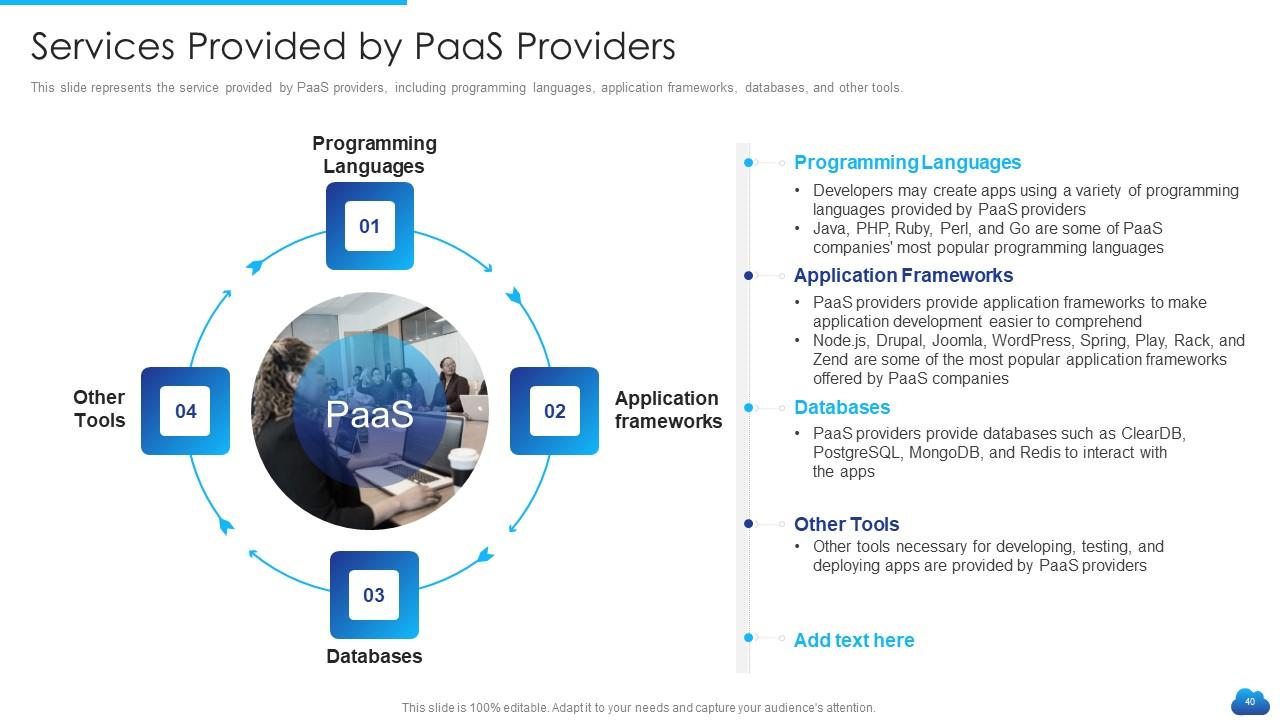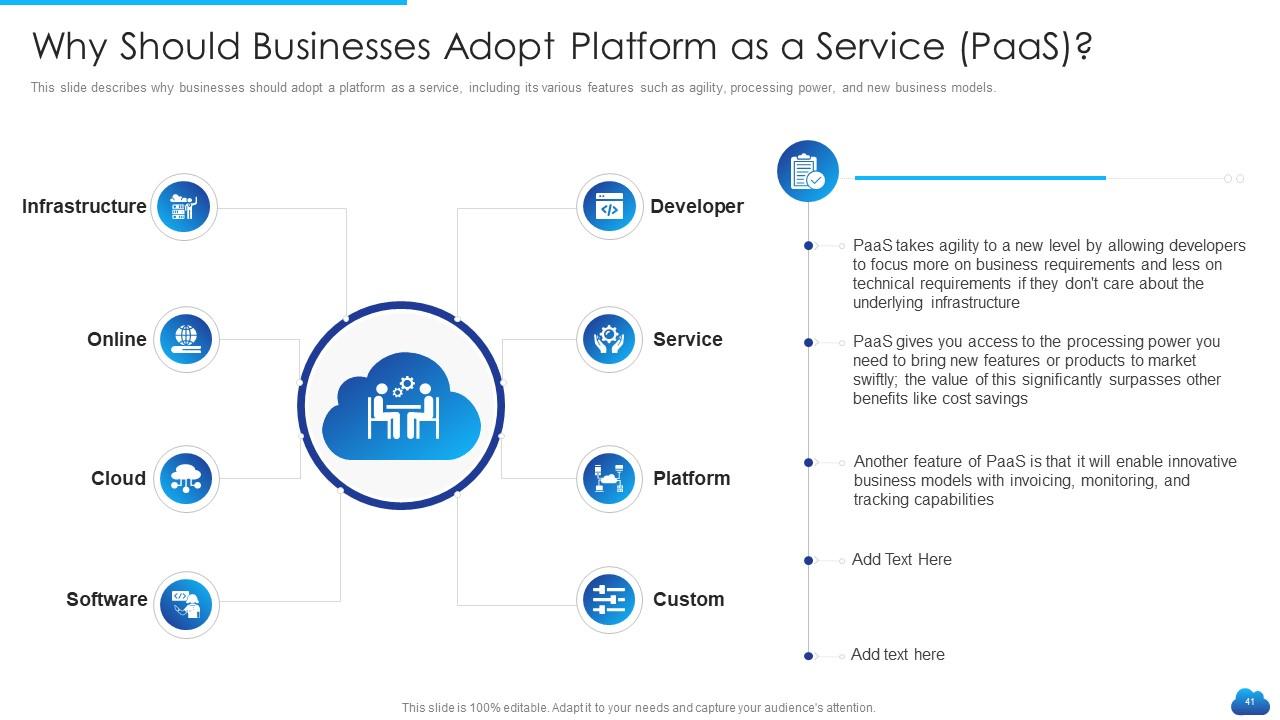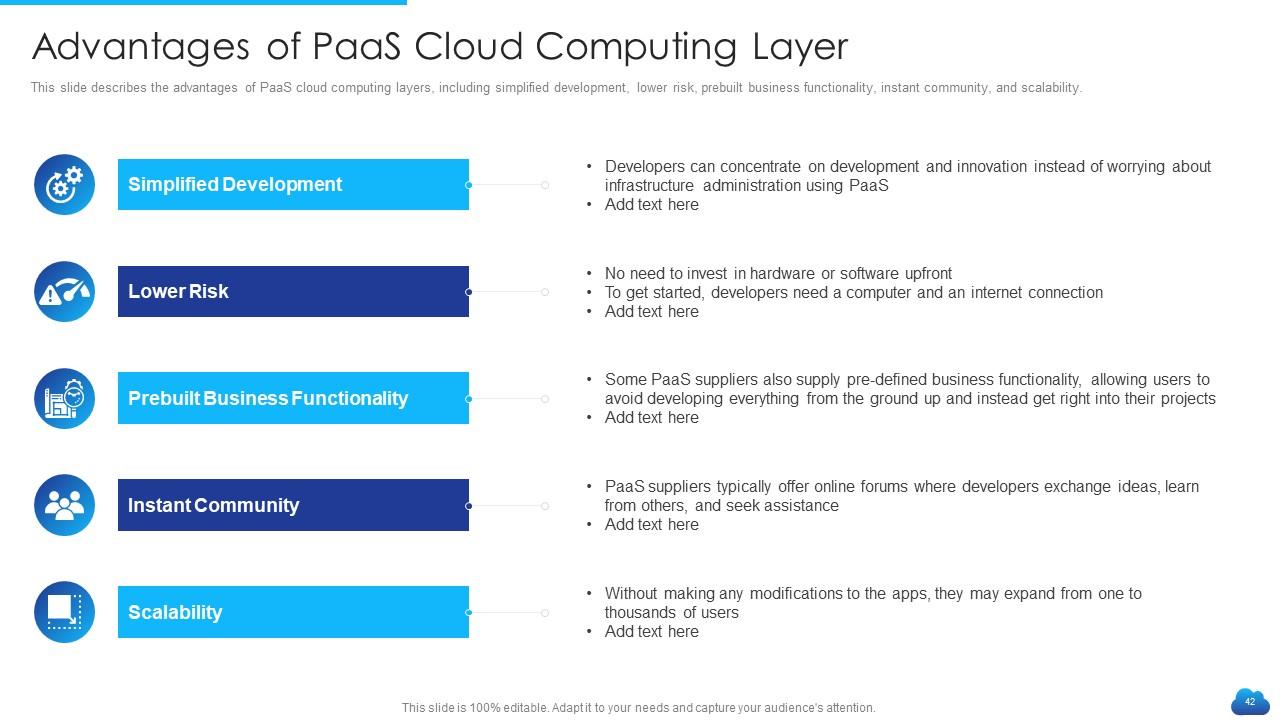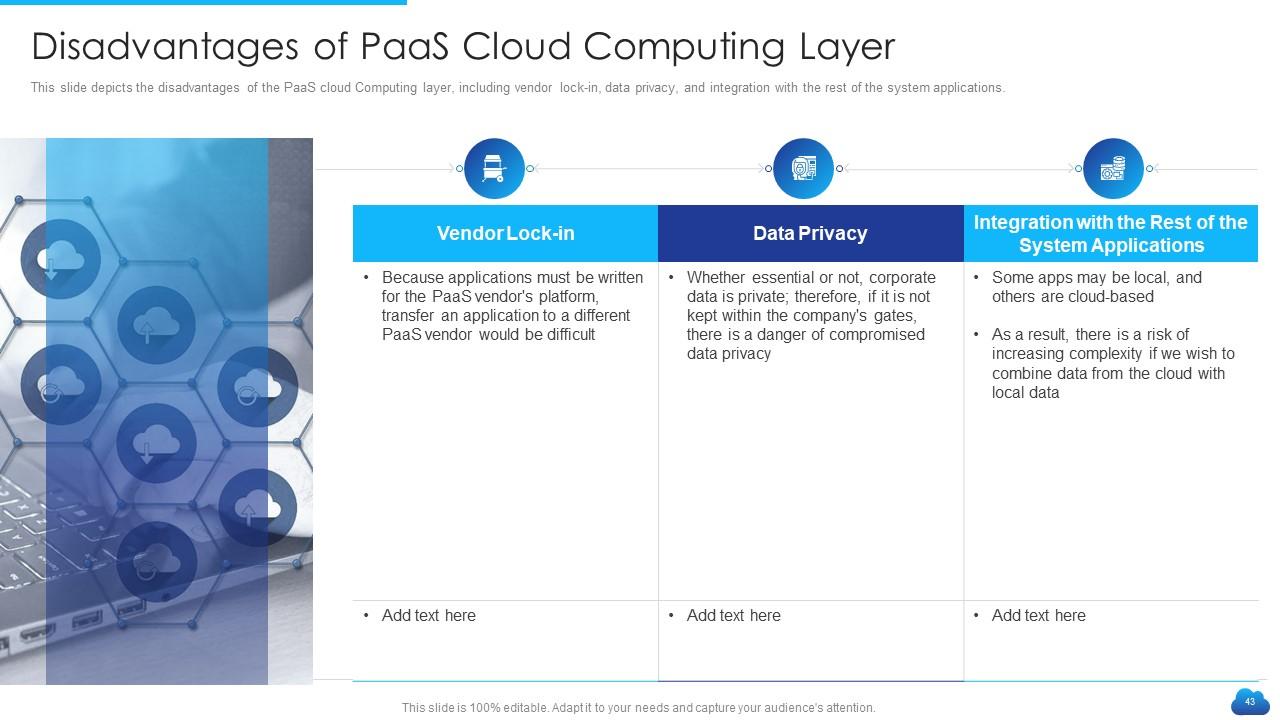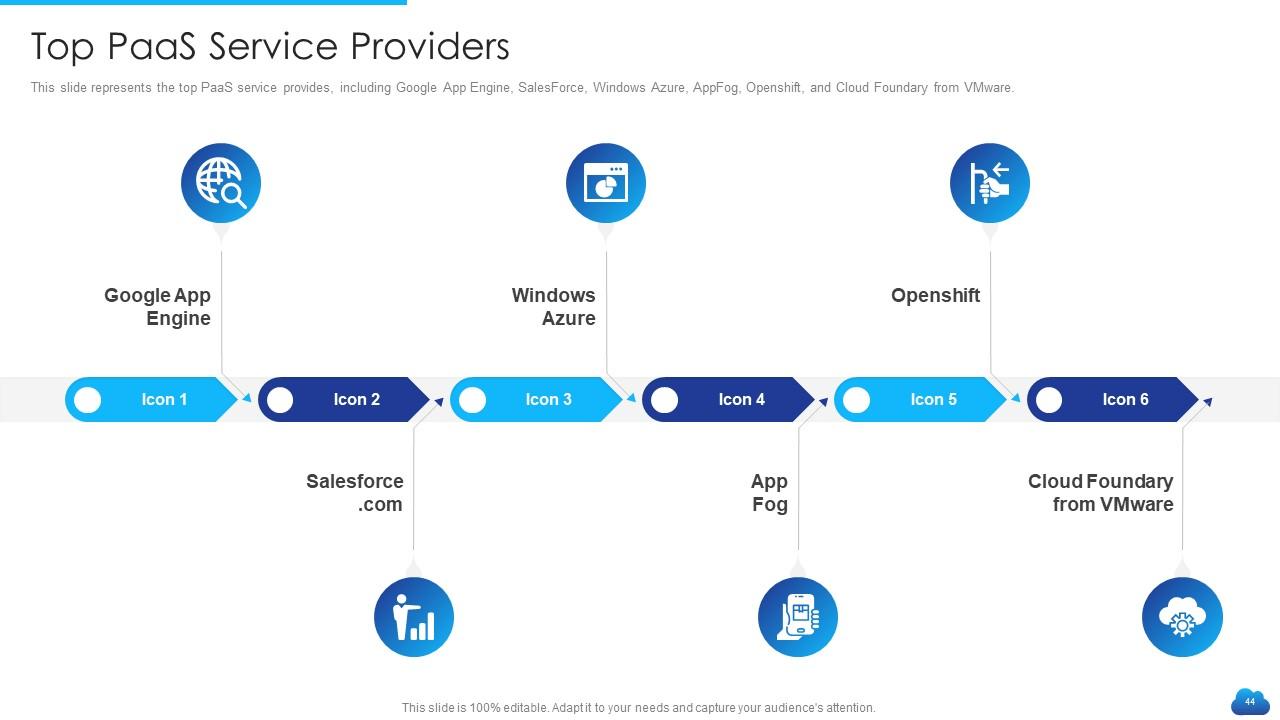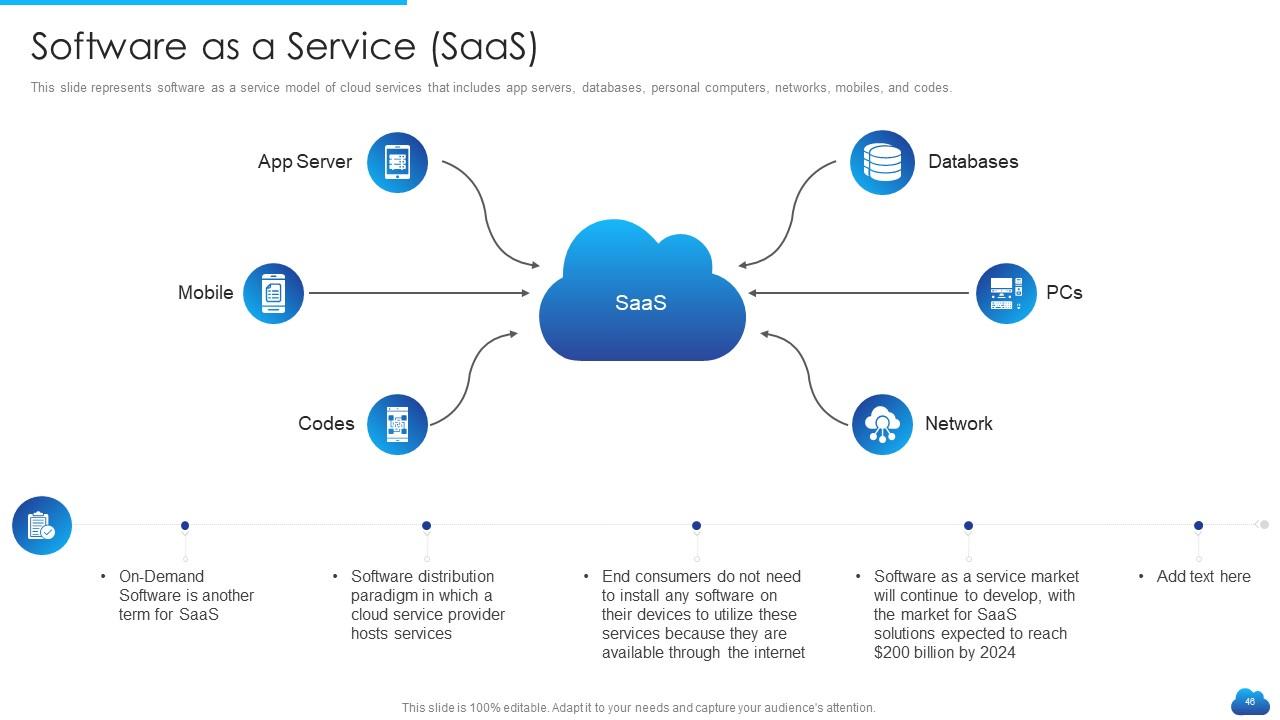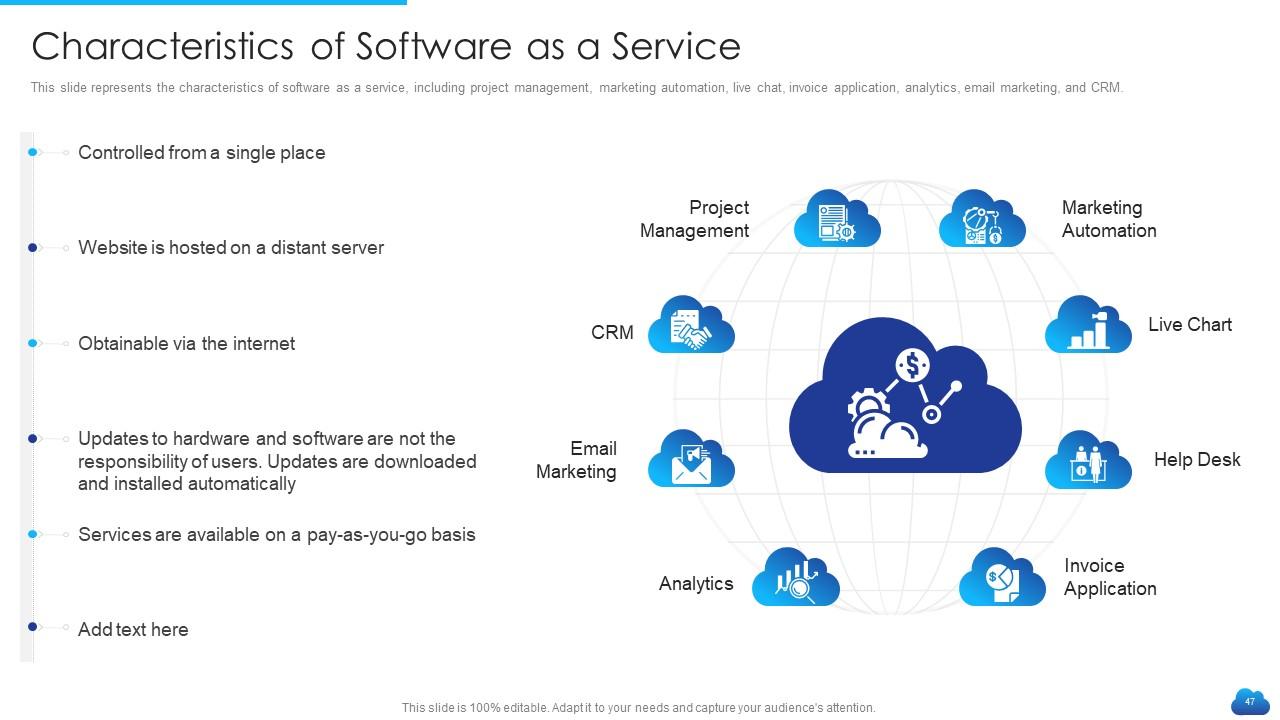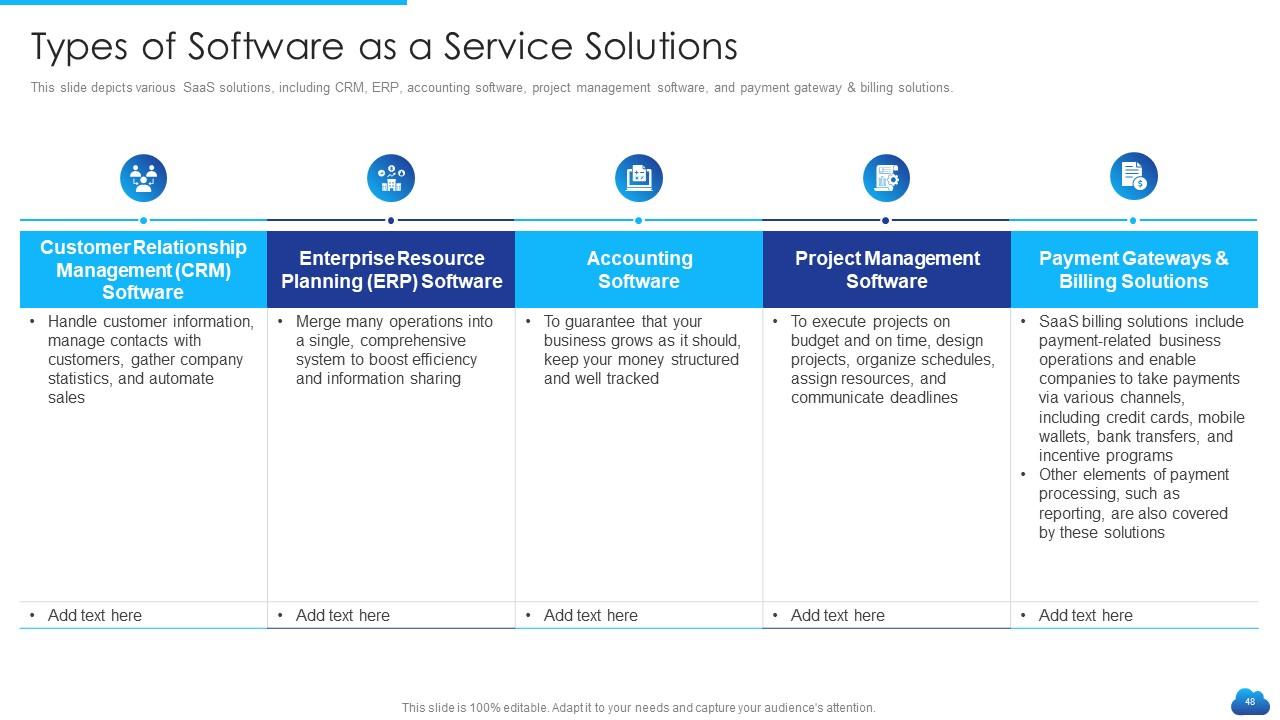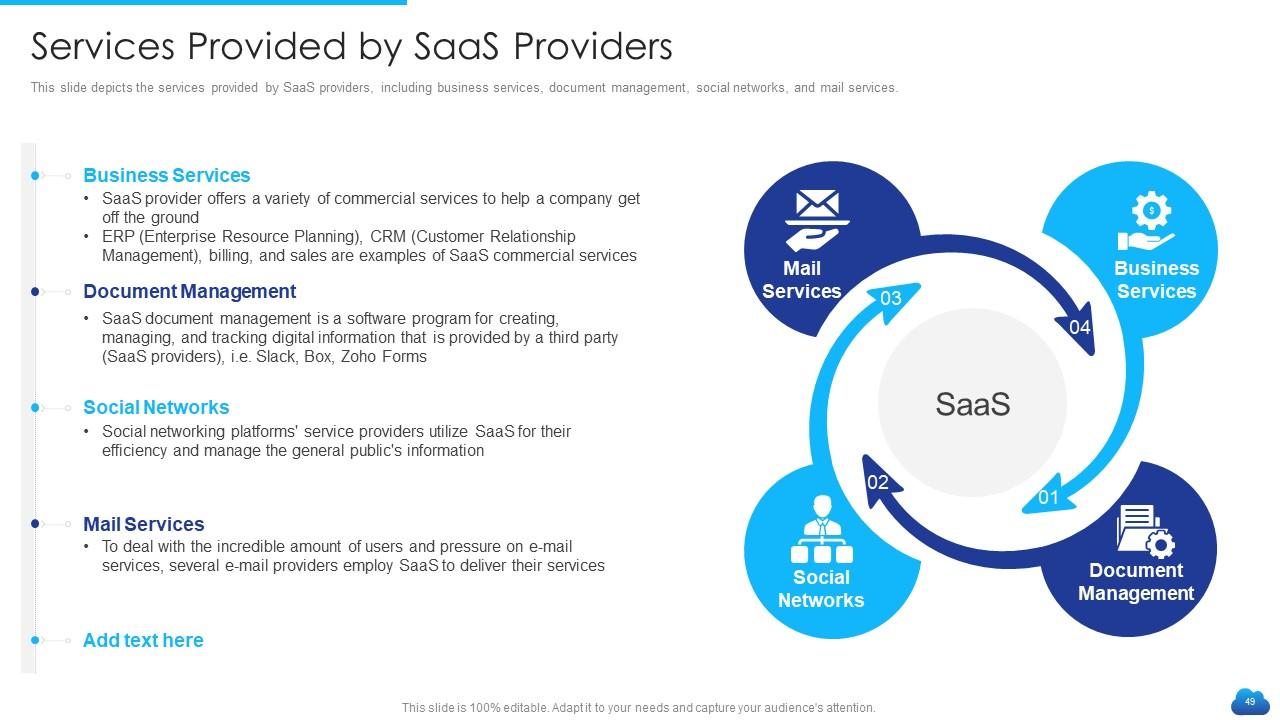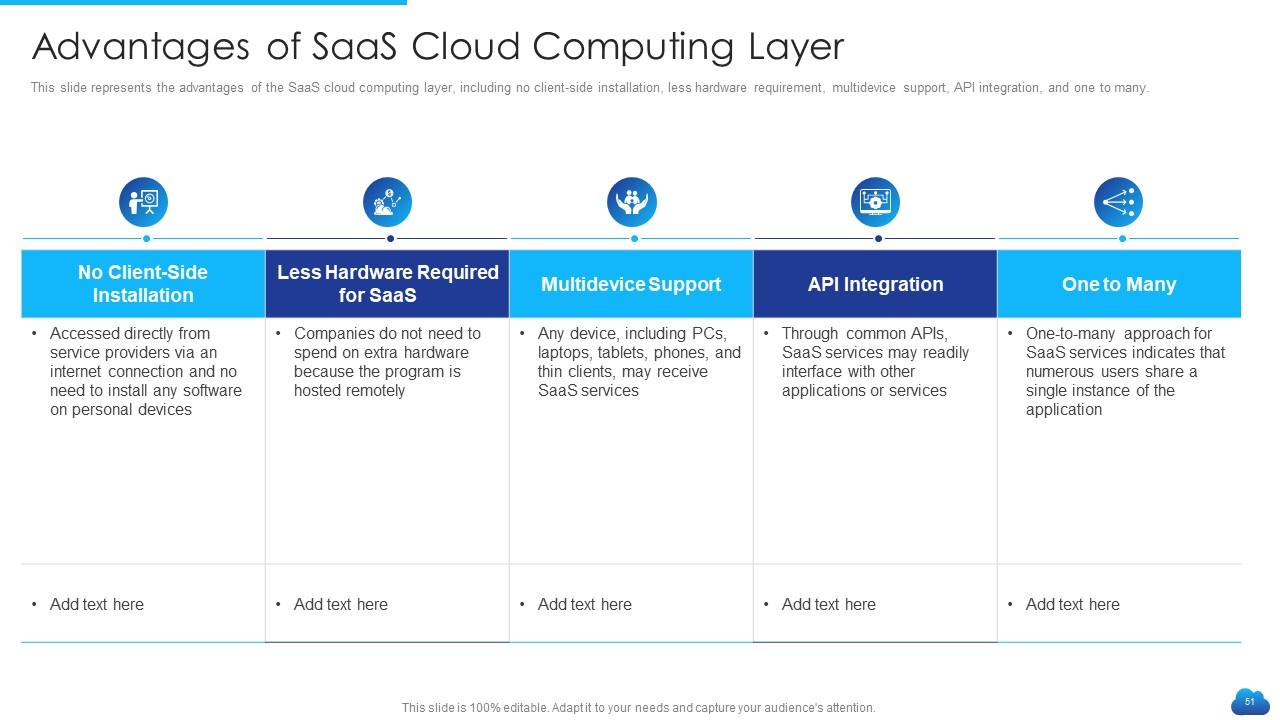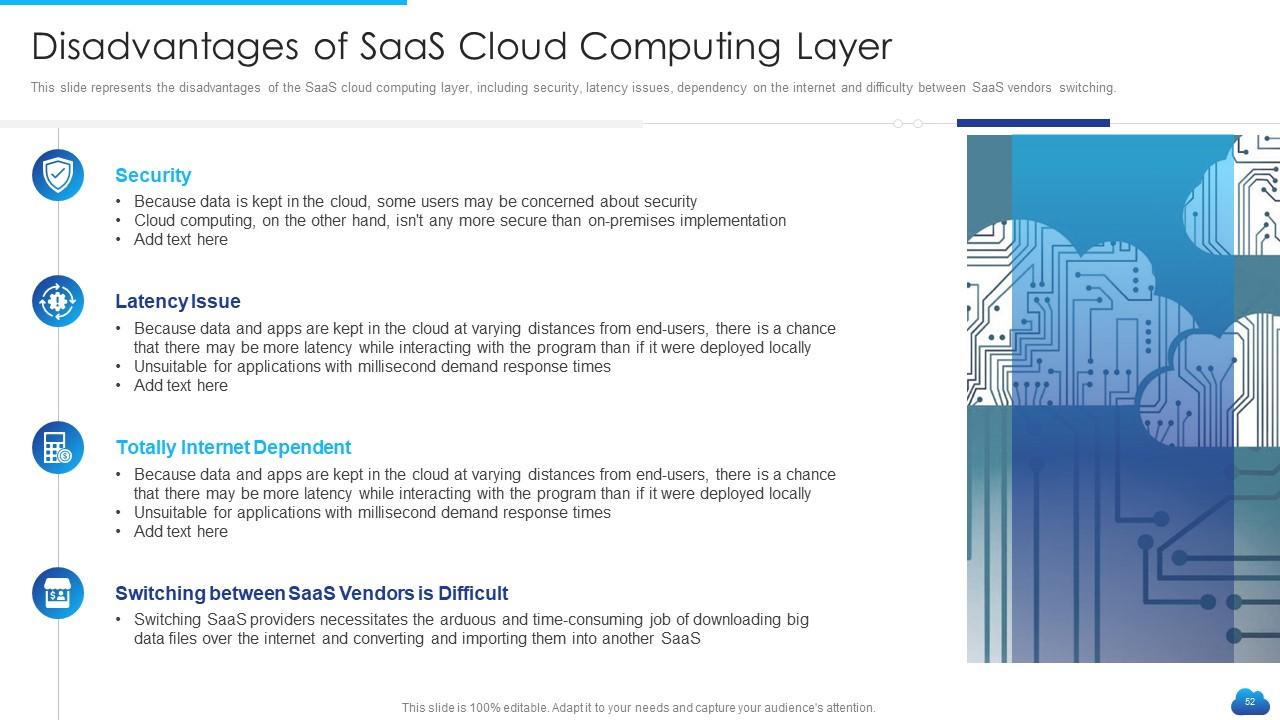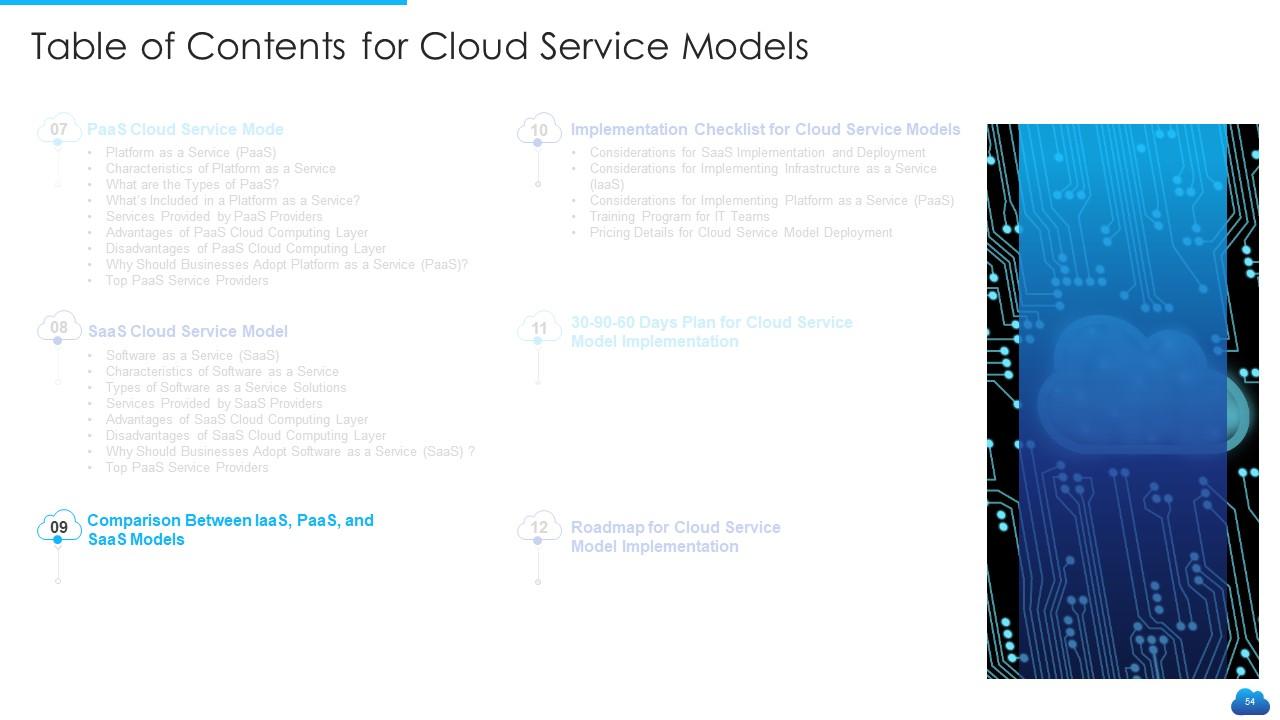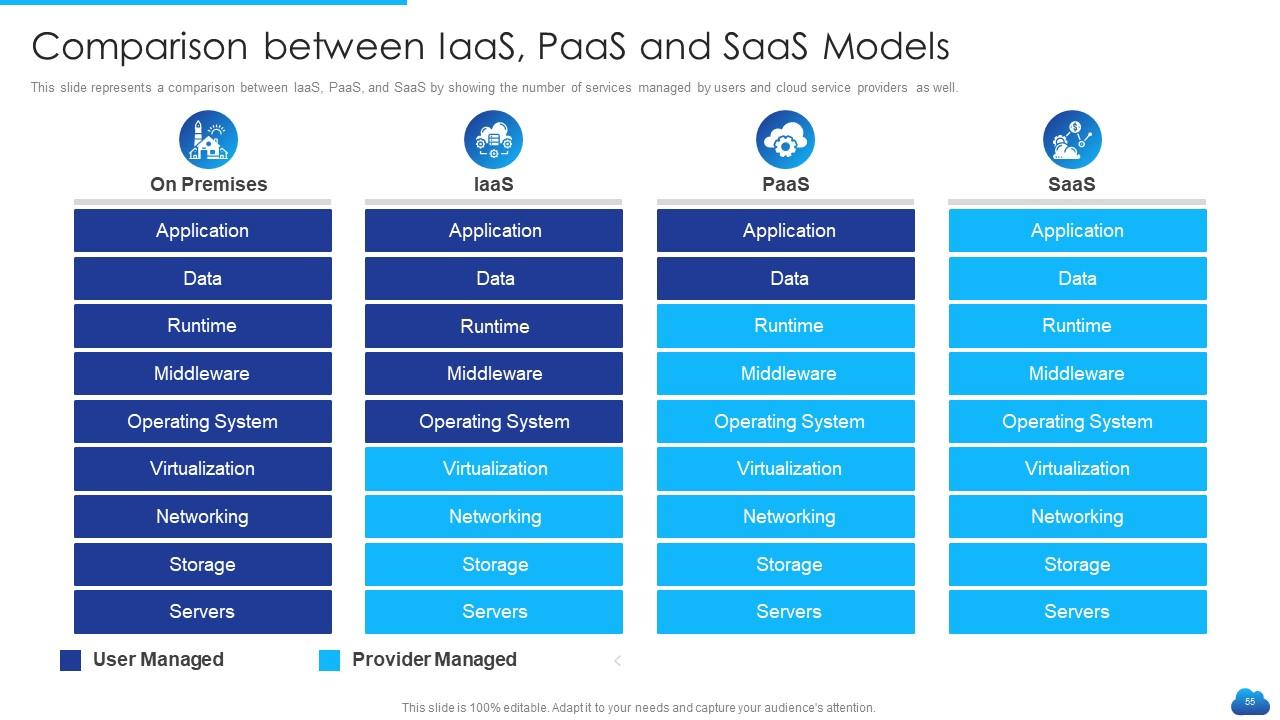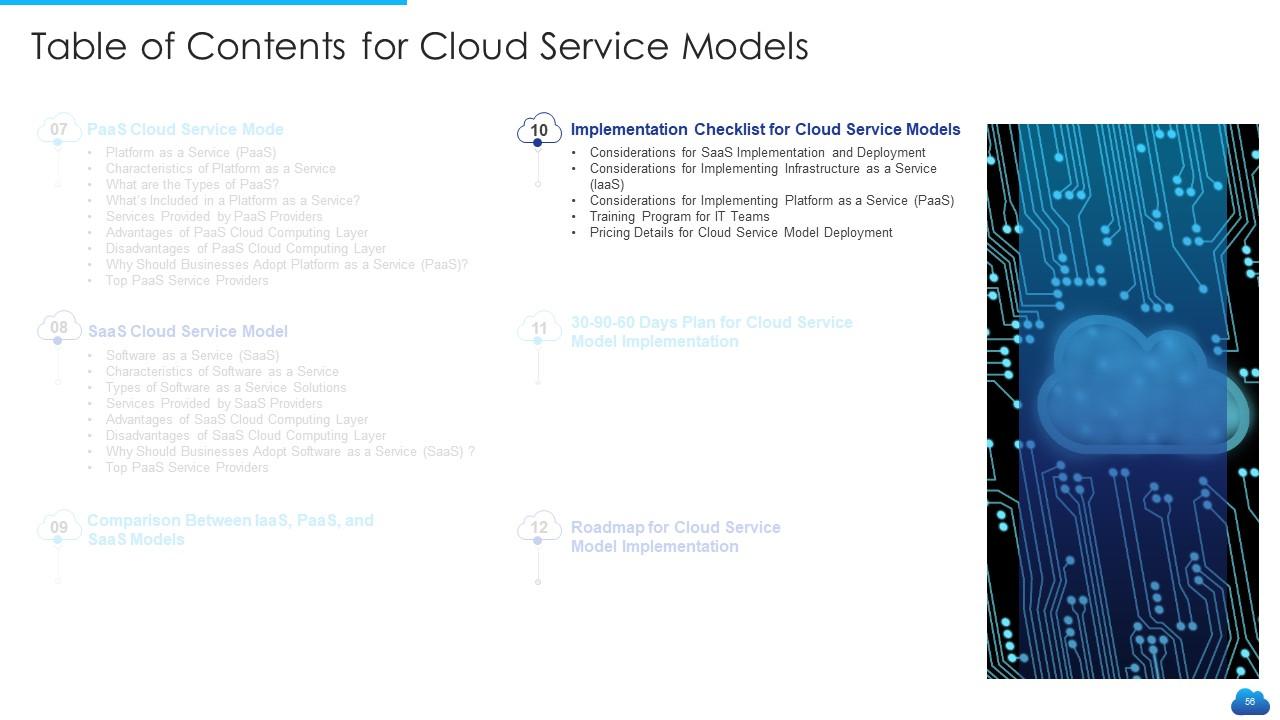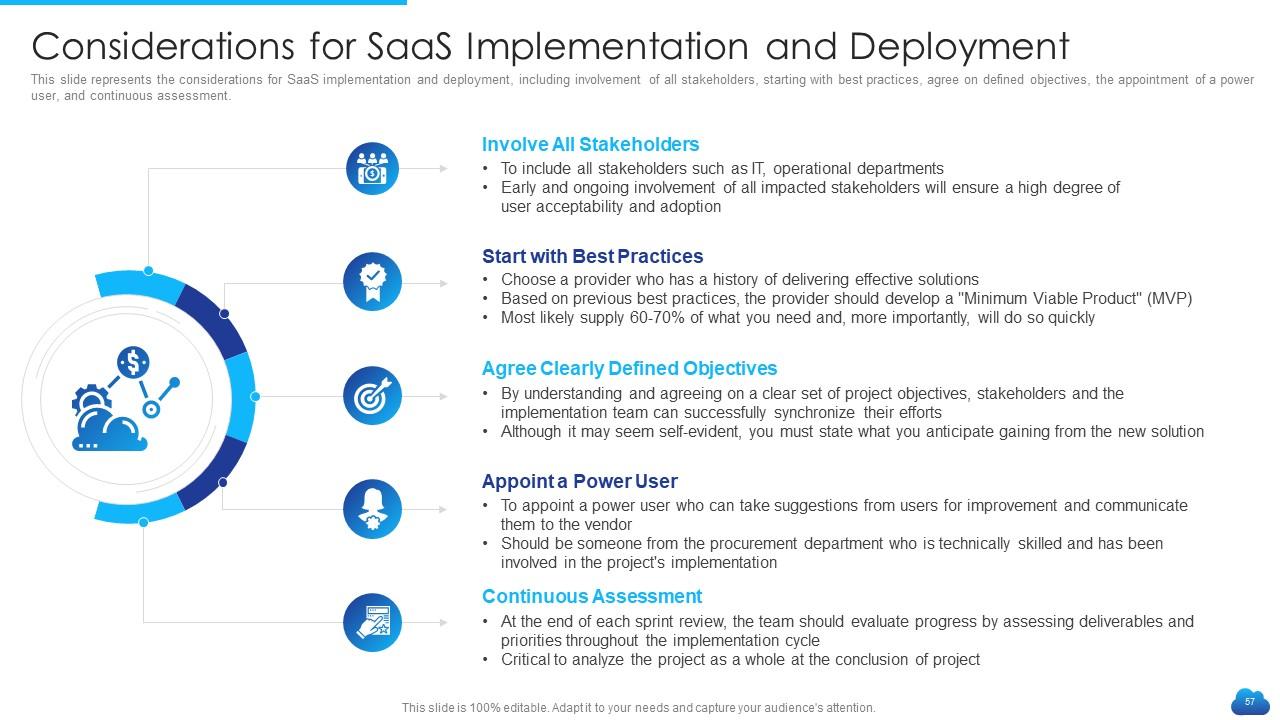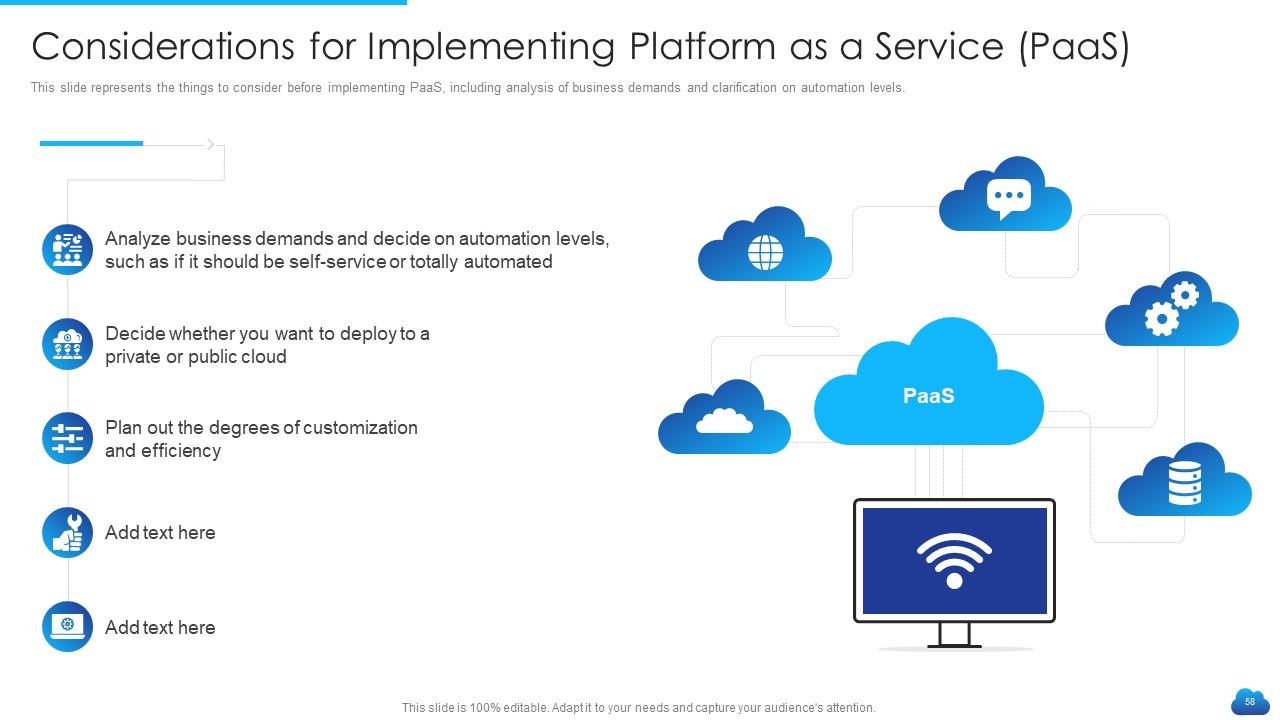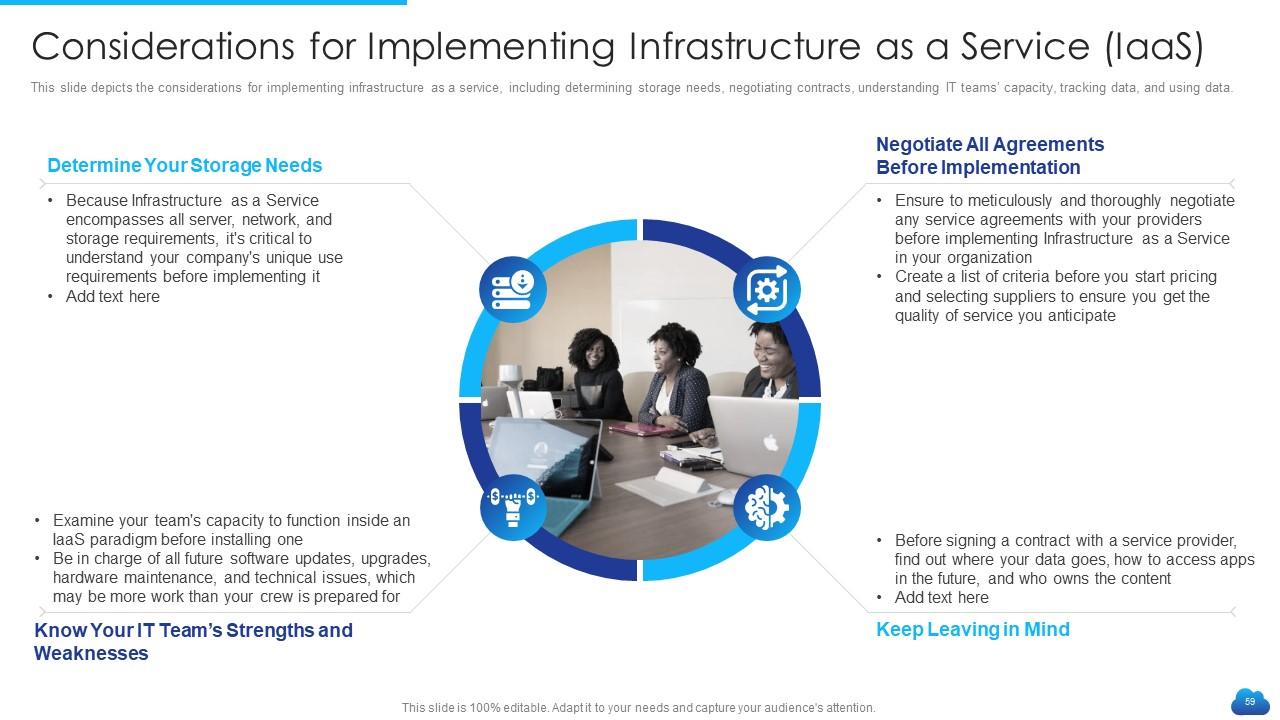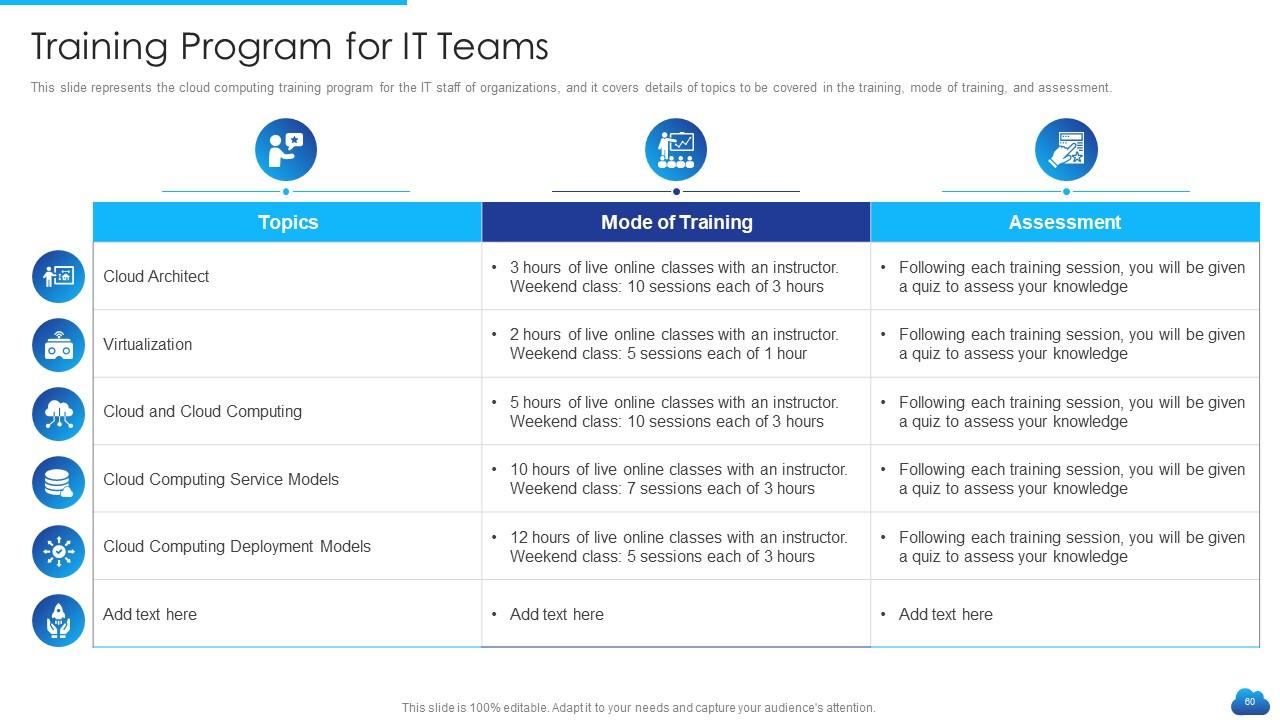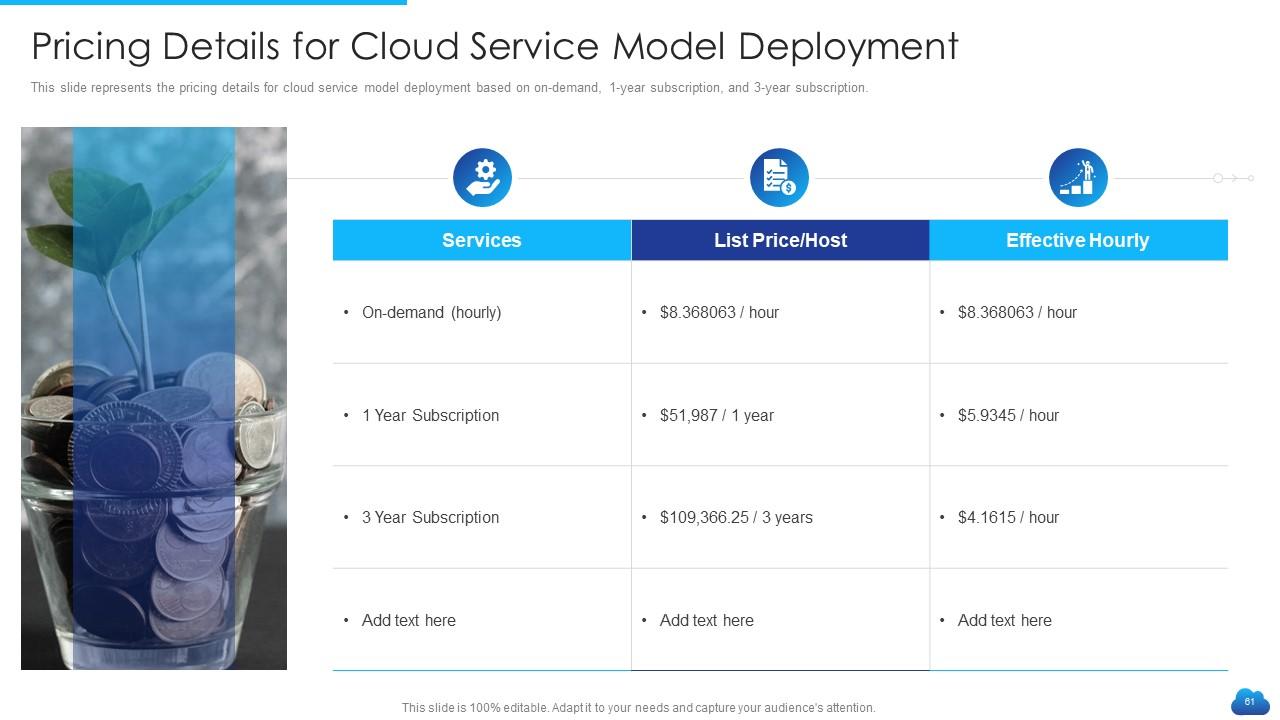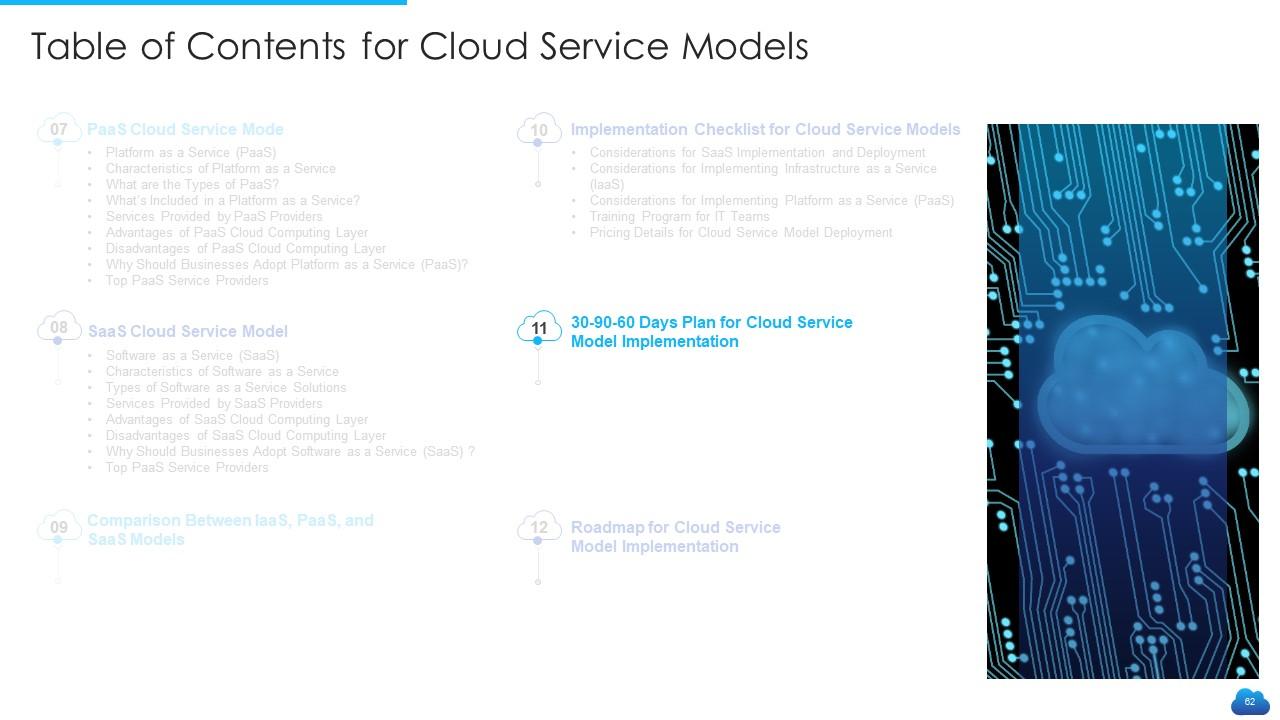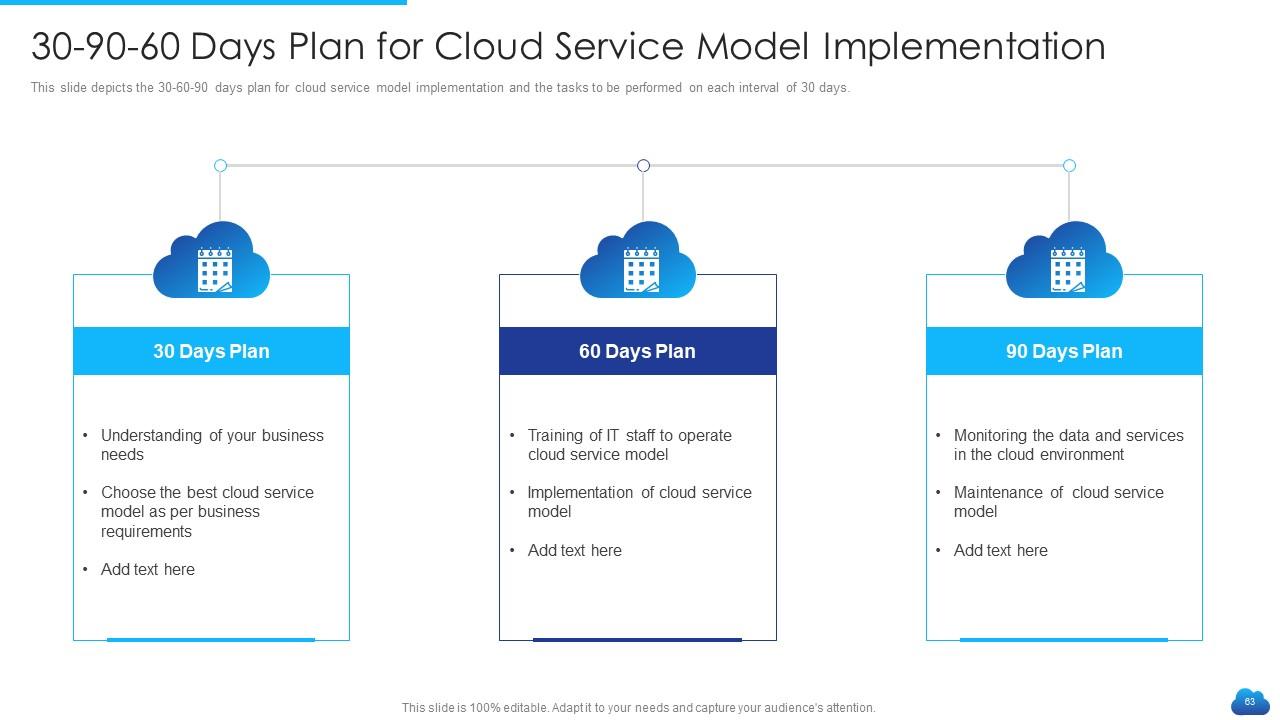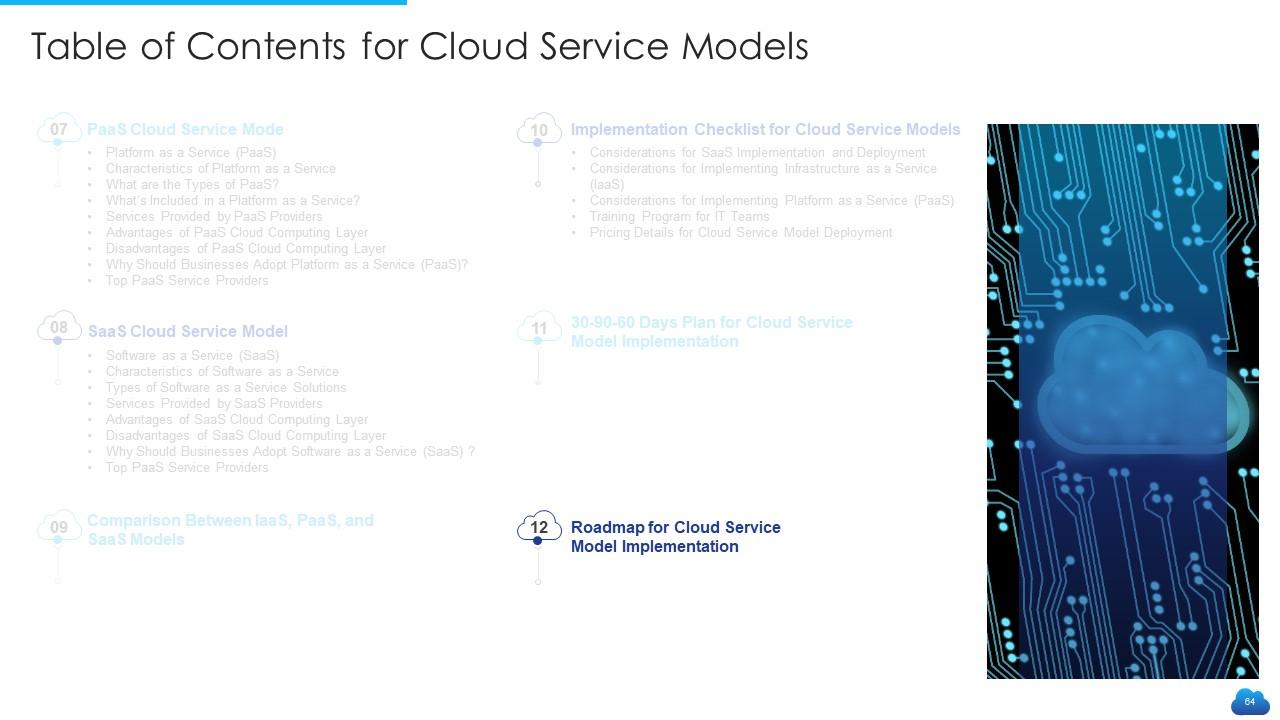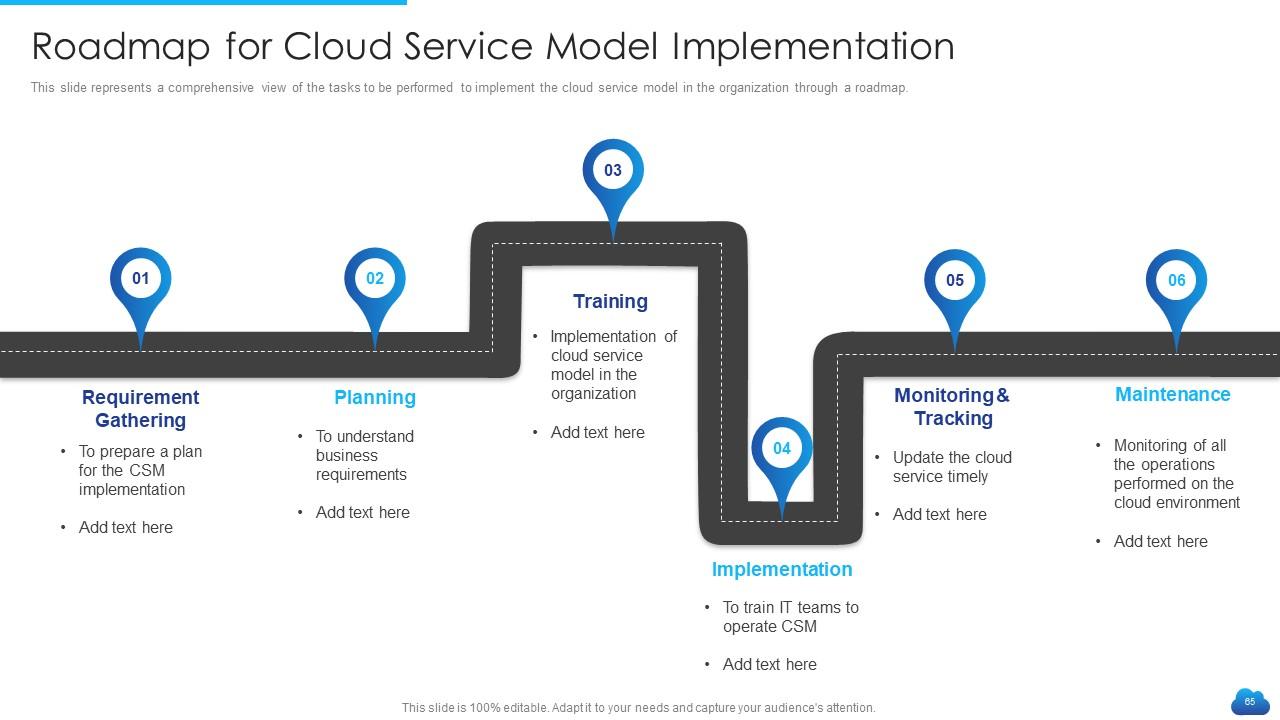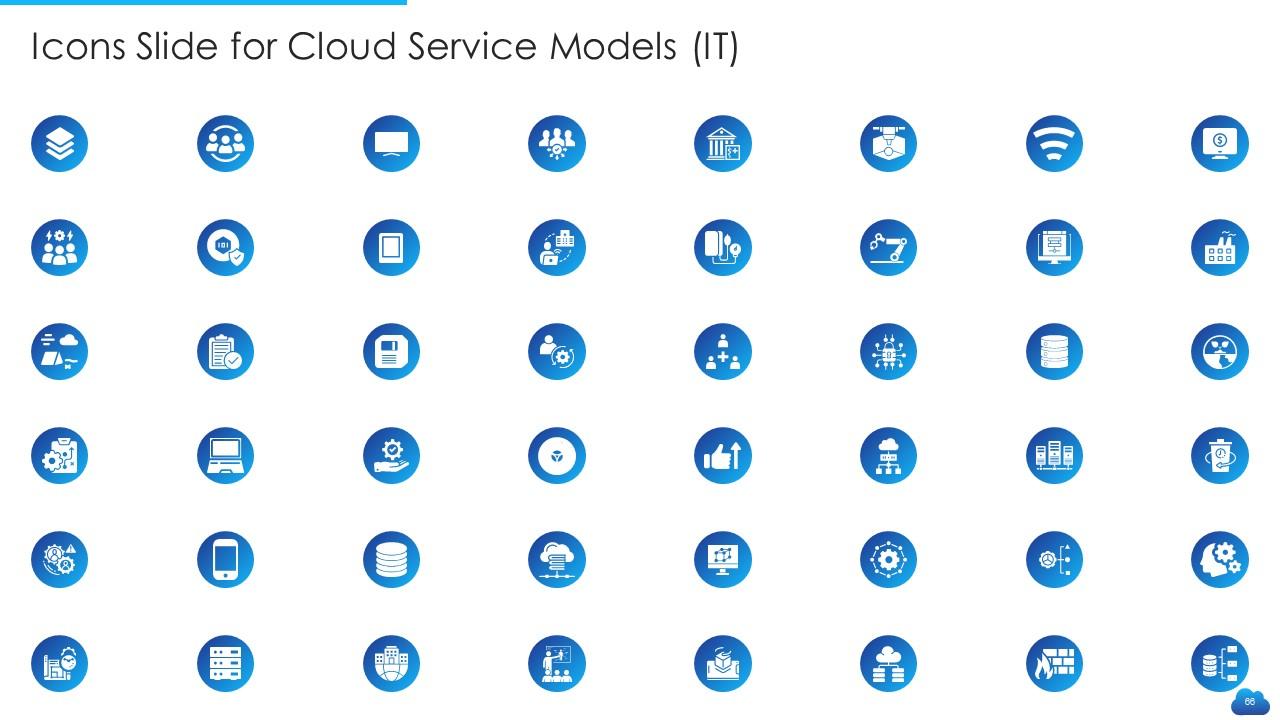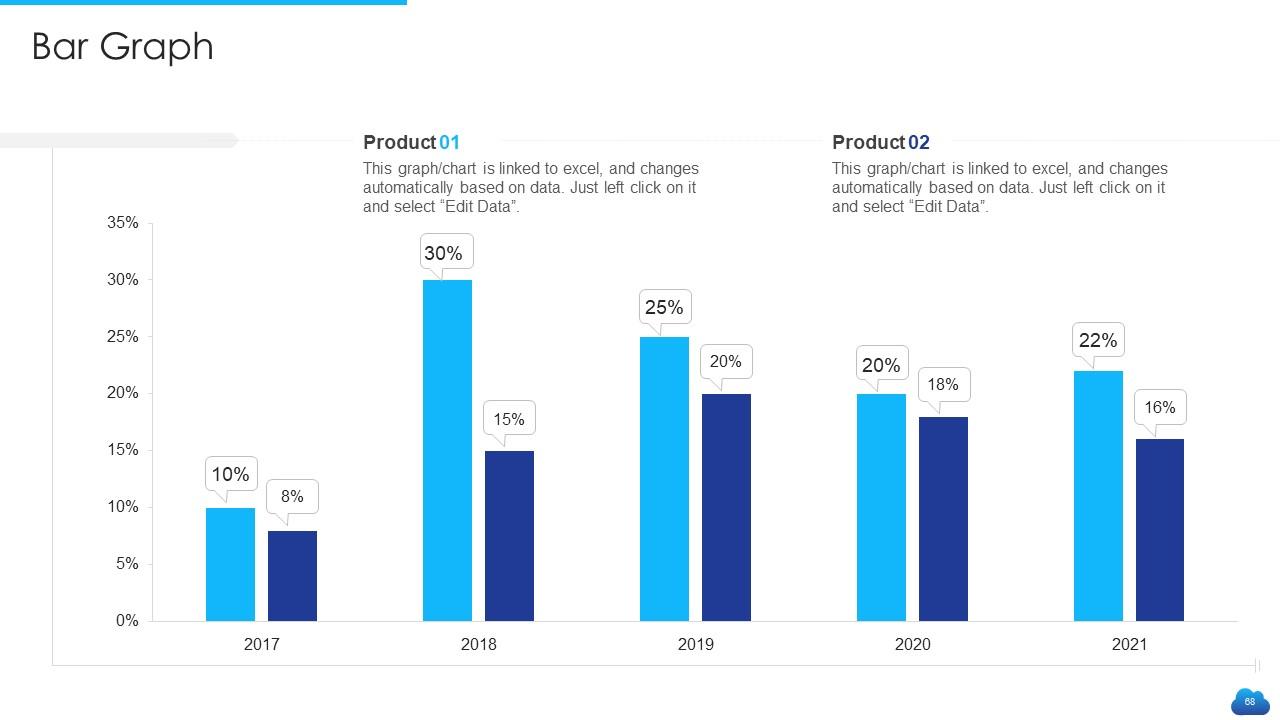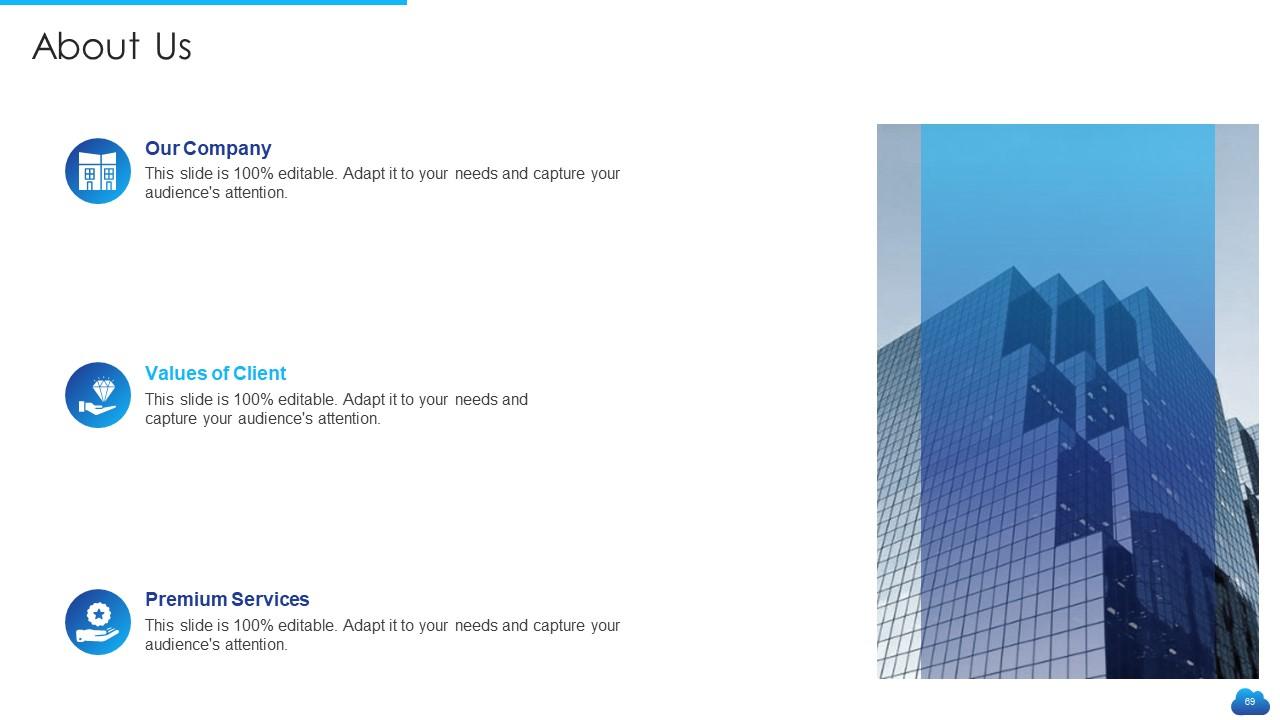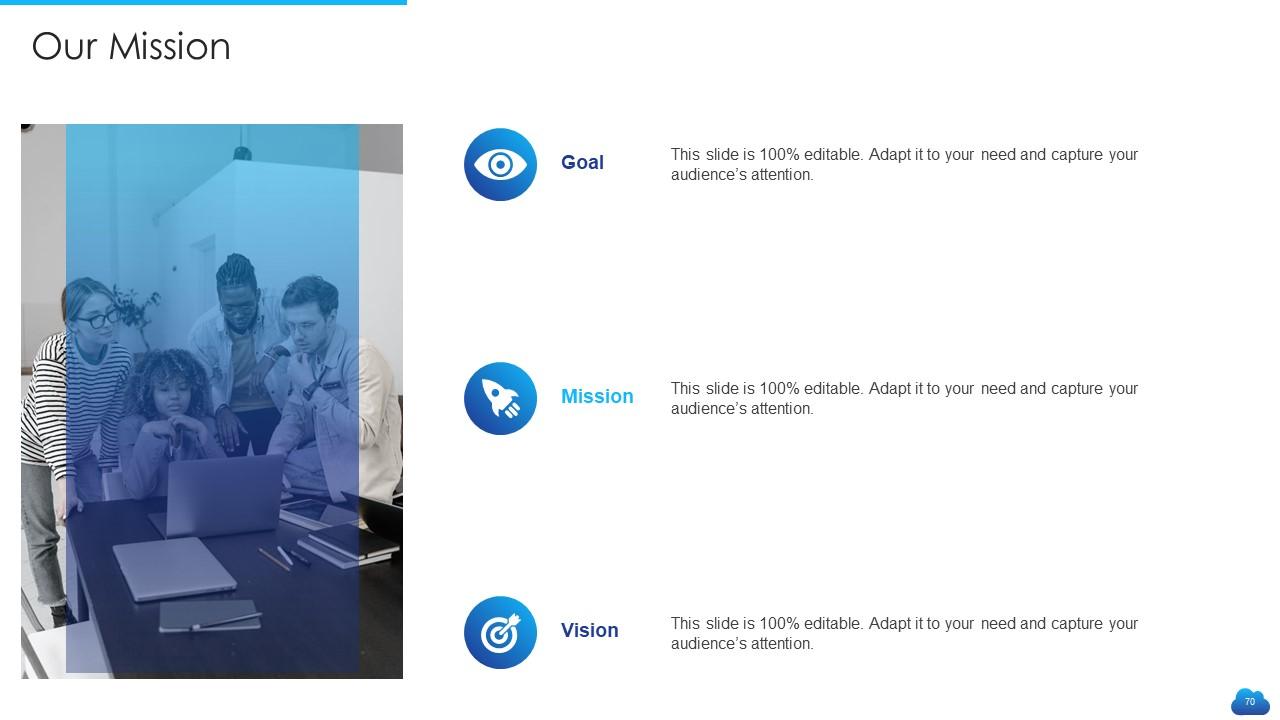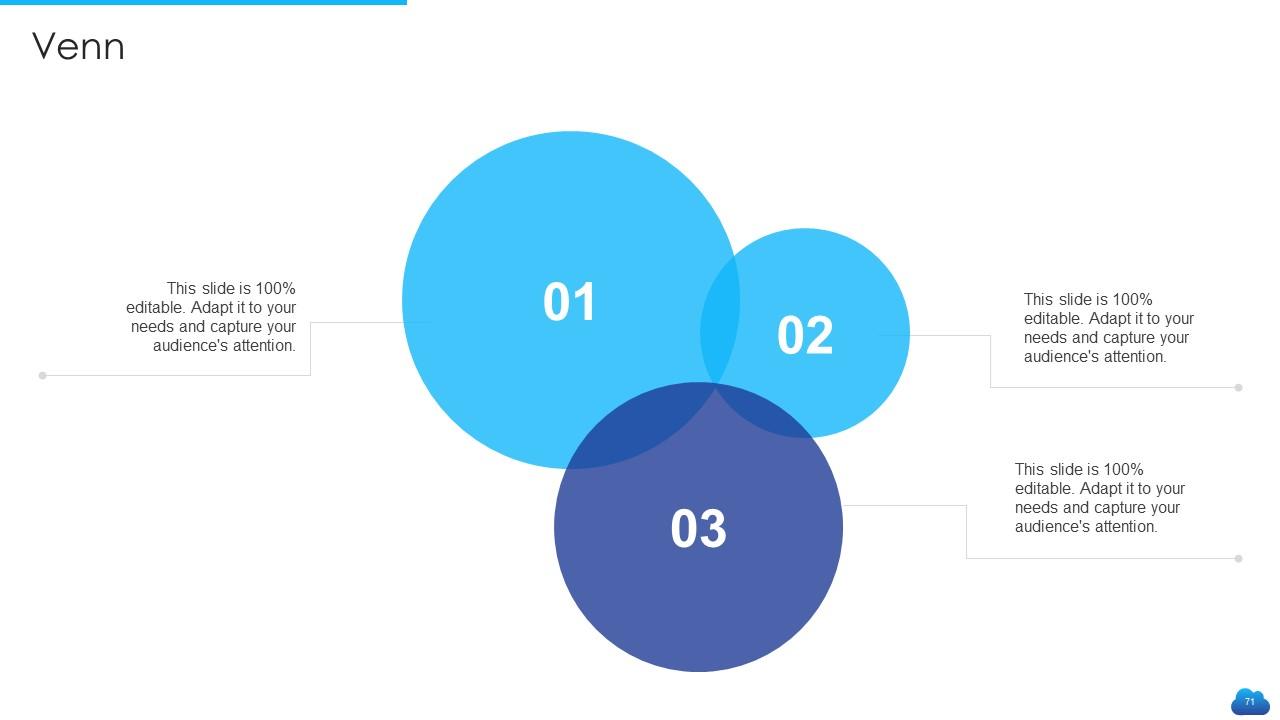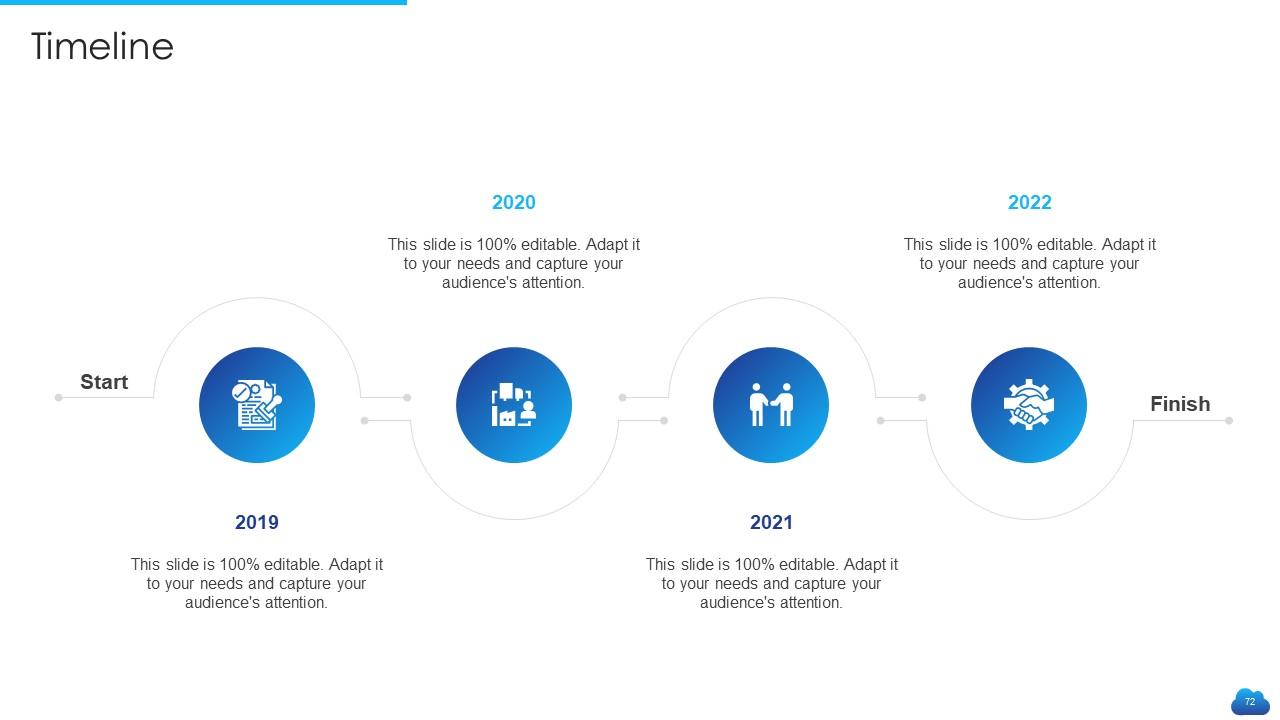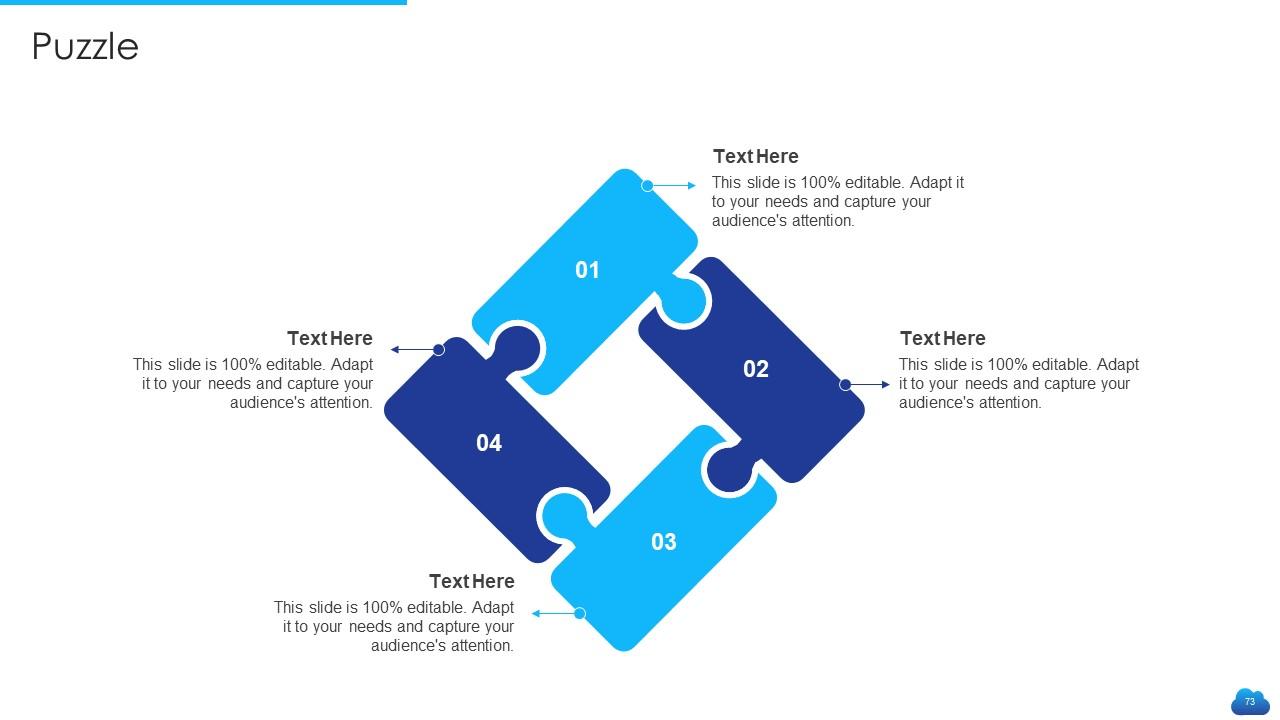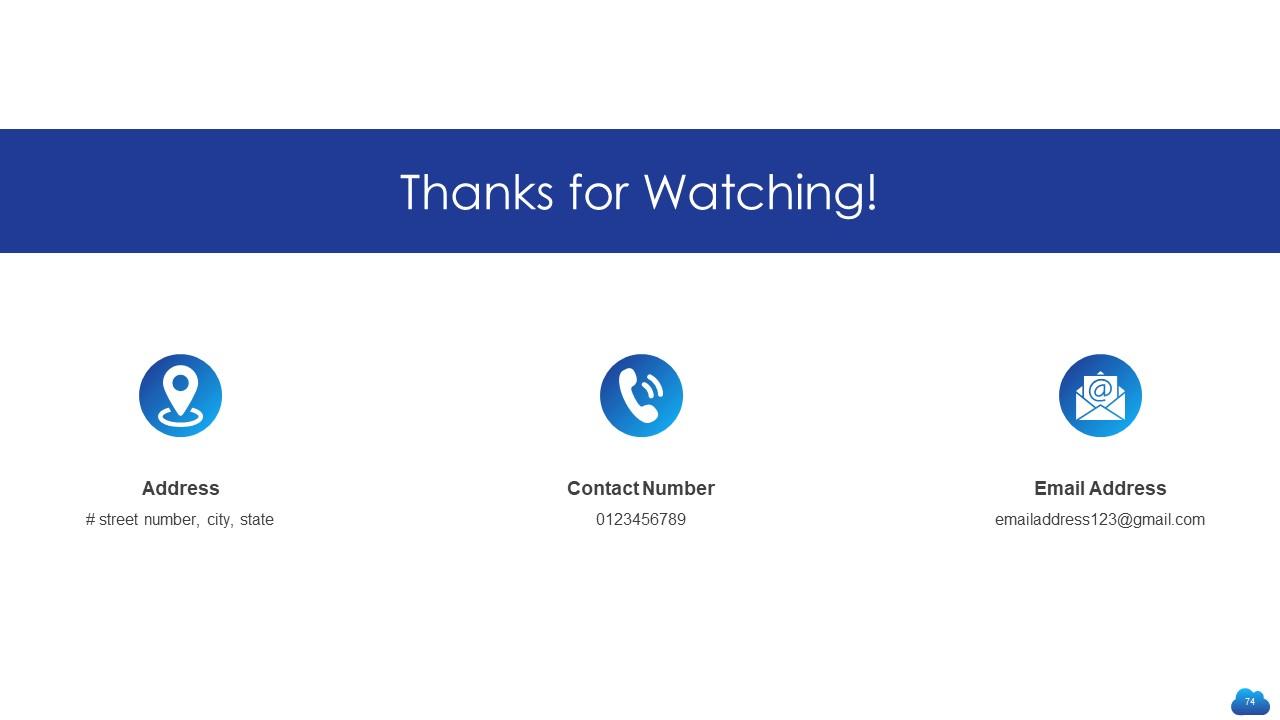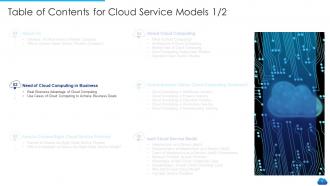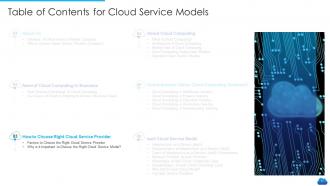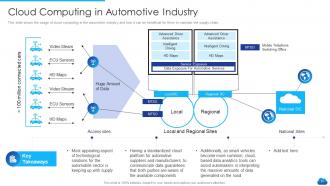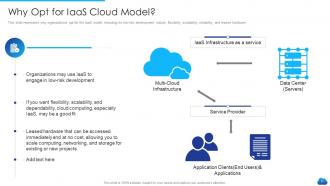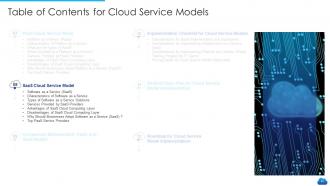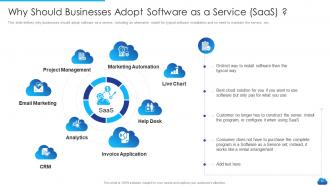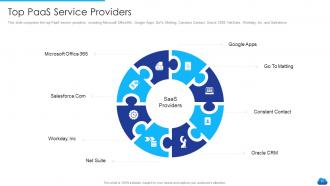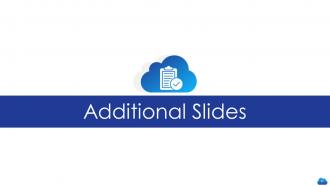Cloud services model it powerpoint presentation slides
Cloud computing is a burgeoning industry that enables businesses to move away from on-premise IT infrastructure and instead depend on internet-based services. Check out our efficiently designed Cloud Services Model IT template that gives a brief idea about cloud service provider companies, an overview of cloud computing, architecture and types, etc. In this presentation, we have covered how different industries utilize cloud computing, standard cloud service models such as infrastructure as a service IaaS, platform as a service PaaS, and software as a service SaaS. In addition, this PPT contains the introduction of IaaS, its characteristics, types of IaaS environments, service provided by service providers, pros and cons, reasons to choose the IaaS model, and top service providers for IaaS. Also, the presentation includes the PaaS introduction, types, elements included in PaaS, and SaaS introduction and types of SaaS solutions. Furthermore, this template compares three cloud service models, namely IaaS, PaaS, and SaaS, and provides a checklist to implement each model. Lastly, this Cloud-based Services deck comprises a 30-60-90 days plan and a roadmap to implement cloud service models in the organization. Get access to this 100 percent editable template now.
Cloud computing is a burgeoning industry that enables businesses to move away from on-premise IT infrastructure and instead..
- Google Slides is a new FREE Presentation software from Google.
- All our content is 100% compatible with Google Slides.
- Just download our designs, and upload them to Google Slides and they will work automatically.
- Amaze your audience with SlideTeam and Google Slides.
-
Want Changes to This PPT Slide? Check out our Presentation Design Services
- WideScreen Aspect ratio is becoming a very popular format. When you download this product, the downloaded ZIP will contain this product in both standard and widescreen format.
-

- Some older products that we have may only be in standard format, but they can easily be converted to widescreen.
- To do this, please open the SlideTeam product in Powerpoint, and go to
- Design ( On the top bar) -> Page Setup -> and select "On-screen Show (16:9)” in the drop down for "Slides Sized for".
- The slide or theme will change to widescreen, and all graphics will adjust automatically. You can similarly convert our content to any other desired screen aspect ratio.
Compatible With Google Slides

Get This In WideScreen
You must be logged in to download this presentation.
PowerPoint presentation slides
Deliver this complete deck to your team members and other collaborators. Encompassed with stylized slides presenting various concepts, this Cloud Services Model IT Powerpoint Powerpoint Presentation is the best tool you can utilize. Personalize its content and graphics to make it unique and thought-provoking. All the seventy four slides are editable and modifiable, so feel free to adjust them to your business setting. The font, color, and other components also come in an editable format making this PPT design the best choice for your next presentation. So, download now.
People who downloaded this PowerPoint presentation also viewed the following :
Content of this Powerpoint Presentation
Slide 1: This slide introduces Cloud Service Models (IT). State Your Company Name and begin.
Slide 2: This is an Agenda slide. State your agendas here.
Slide 3: This slide presents Table of Contents for Cloud Service Models.
Slide 4: This is another slide continuing Table of Contents for Cloud Service Models.
Slide 5: This slide displays Table of Contents for Cloud Service Models.
Slide 6: This slide shows overview of the cloud service provider company, including its functionality, number of customers and partners.
Slide 7: This slide represents why companies should choose cloud service provider company based on locations and countries they served.
Slide 8: This slide presents Table of Contents for Cloud Service Models.
Slide 9: This slide shows Real Business Advantage of Cloud Computing.
Slide 10: This slide displays Use Cases of Cloud Computing to Achieve Business Goals.
Slide 11: This slide shows Table of Contents for Cloud Service Models.
Slide 12: This slide shows Factors to Choose the Right Cloud Service Provider.
Slide 13: This slide presents Why is it Important to Choose the Right Cloud Service Model.
Slide 14: This slide displays Table of Contents for Cloud Service Models.
Slide 15: This slide represents cloud computing, including its various elements such as monitoring, content, etc.
Slide 16: This slide shows cloud computing architecture, including client infrastructure that falls under the front end and back end.
Slide 17: This slide represents the market rate of cloud computing, and it is showing the percentage of users who are using public cloud.
Slide 18: This slide presents cloud computing deployment models, including the public cloud, private cloud, hybrid cloud, etc.
Slide 19: This slide shows standard cloud service models, namely software as a service, platform as a service, and infrastructure as a service.
Slide 20: This slide displays Table of Contents for Cloud Service Models.
Slide 21: This slide represents the usage of cloud computing in the healthcare industry.
Slide 22: This slide displays the usage of cloud computing in the finance industry, and it provides many tools for the finance industry.
Slide 23: This slide depicts the usage of cloud computing in the education industry and how it is beneficial for students.
Slide 24: This slide shows the usage of cloud computing in the automotive industry and how it can be beneficial for them.
Slide 25: This slide displays Cloud Computing in Manufacturing Industry.
Slide 26: This slide shows Table of Contents for Cloud Service Models.
Slide 27: This slide represents the infrastructure as a service model of the cloud computing service.
Slide 28: This slide presents the characteristics of infrastructure as a service, including resource-as-a-service, pay-as-you-go, etc.
Slide 29: This slide displays the types of environments provided in infrastructure as a service model.
Slide 30: This slide shows various services provided by IaaS providers, such as computation, storage, networking, and load balancing.
Slide 31: This slide represents why organizations opt for the IaaS model, including its low-risk development nature, flexibility, etc.
Slide 32: This slide describes the advantages of the IaaS cloud computing layer, including shared infrastructure, web access, etc.
Slide 33: This slide presents Disadvantages of IaaS Cloud Computing Layer.
Slide 34: This slide depicts some popular IaaS service providers such as Amazon web services, Netmagic solutions, Rackspace, etc.
Slide 35: This slide displays Table of Contents for Cloud Service Models.
Slide 36: This slide shows platform as a service that provides a runtime environment to developers.
Slide 37: This slide shows the characteristics of the platform as a service, including conferencing & collaboration, presence, video, etc.
Slide 38: This slide presents the various types of PaaS, including public PaaS, private PaaS, hybrid PaaS, etc.
Slide 39: This slide depicts the elements of the platform as a service, including infrastructure, middleware, operating system, etc.
Slide 40: This slide represents the service provided by PaaS providers, including programming languages, application frameworks, etc.
Slide 41: This slide describes why businesses should adopt a platform as a service, including its various features.
Slide 42: This slide shows Advantages of PaaS Cloud Computing Layer.
Slide 43: This slide presents Disadvantages of PaaS Cloud Computing Layer.
Slide 44: This slide represents the top PaaS service provides, including Google App Engine, SalesForce, etc.
Slide 45: This slide shows Table of Contents for Cloud Service Models.
Slide 46: This slide displays software as a service model of cloud services that includes app servers, databases, personal computers, etc.
Slide 47: This slide represents the characteristics of software as a service, including project management, marketing automation, etc.
Slide 48: This slide presents Types of Software as a Service Solutions.
Slide 49: This slide depicts the services provided by SaaS providers, including business services, document management, etc.
Slide 50: This slide defines why businesses should adopt software as a service.
Slide 51: This slide represents the advantages of the SaaS cloud computing layer.
Slide 52: This slide shows Disadvantages of SaaS Cloud Computing Layer.
Slide 53: This slide comprises the top PaaS service providers, including Microsoft Office365, Google Apps, GoTo Metting, etc.
Slide 54: This slide shows Table of Contents for Cloud Service Models.
Slide 55: This slide represents a comparison between IaaS, PaaS, and SaaS by showing the number of services.
Slide 56: This slide shows Table of Contents for Cloud Service Models.
Slide 57: This slide represents the considerations for SaaS implementation and deployment, including involvement of all stakeholders.
Slide 58: This slide presents the things to consider before implementing PaaS, including analysis of business demands.
Slide 59: This slide shows Considerations for Implementing Infrastructure as a Service (IaaS).
Slide 60: This slide represents the cloud computing training program for the IT staff of organizations.
Slide 61: This slide shows Pricing Details for Cloud Service Model Deployment.
Slide 62: This slide displays Table of Contents for Cloud Service Models.
Slide 63: This slide depicts the 30-60-90 days plan for cloud service model implementation.
Slide 64: This slide shows Table of Contents for Cloud Service Models.
Slide 65: This slide represents a comprehensive view of the tasks to be performed to implement the cloud service model.
Slide 66: This slide shows Icons for Cloud Service Models.
Slide 67: This slide is titled as Additional Slides for moving forward.
Slide 68: This slide shows Bar Graph with two products comparison.
Slide 69: This is About Us slide to show company specifications etc.
Slide 70: This is Our Mission slide with related imagery and text.
Slide 71: This slide shows Venn diagram with text boxes.
Slide 72: This is a Timeline slide. Show data related to time intervals here.
Slide 73: This slide presents Puzzle with related icons and text.
Slide 74: This is a Thank You slide with address, contact numbers and email address.
Cloud services model it powerpoint presentation slides with all 74 slides:
Use our Cloud Services Model IT Powerpoint Presentation Slides to effectively help you save your valuable time. They are readymade to fit into any presentation structure.
FAQs
The real business advantage of cloud computing includes cost savings, scalability, flexibility, improved collaboration, increased productivity, and better security.
The standard cloud service models are Software as a Service (SaaS), Platform as a Service (PaaS), and Infrastructure as a Service (IaaS).
The advantages of the Infrastructure as a Service (IaaS) cloud computing layer include shared infrastructure, web access, low-risk development nature, scalability, flexibility, and cost savings.
The characteristics of the Software as a Service (SaaS) model include project management, marketing automation, business services, document management, and other similar services.
The advantages of the different cloud service models include scalability, flexibility, and cost-effectiveness. However, the disadvantages include potential security risks and limited customization options. Businesses should consider their specific needs, resources, and goals to determine which cloud service model is the best fit for them.
-
Colors used are bright and distinctive.
-
Content of slide is easy to understand and edit.
-
Really like the color and design of the presentation.
-
Unique research projects to present in meeting.
-
Unique research projects to present in meeting.
-
Excellent template with unique design.


